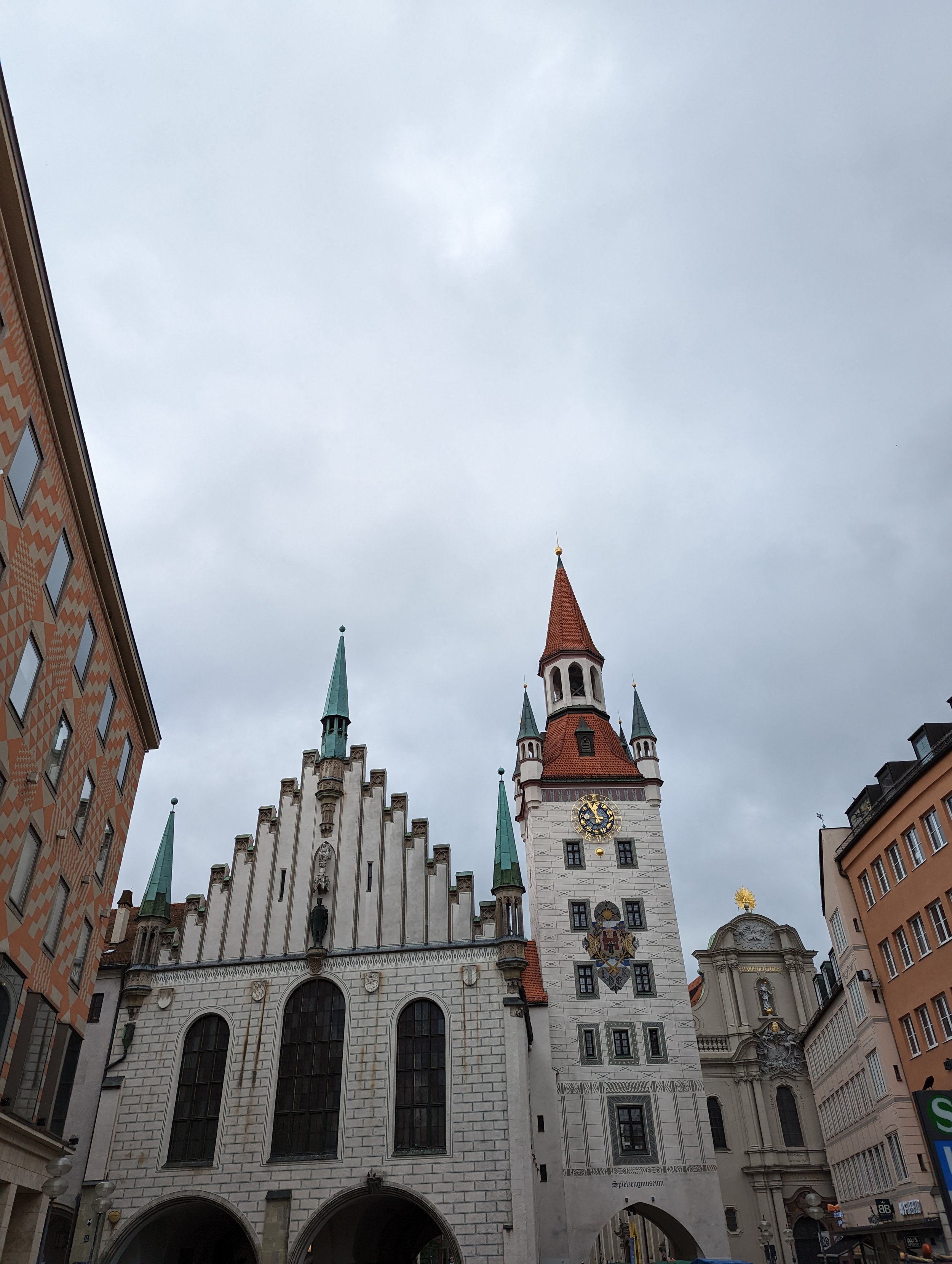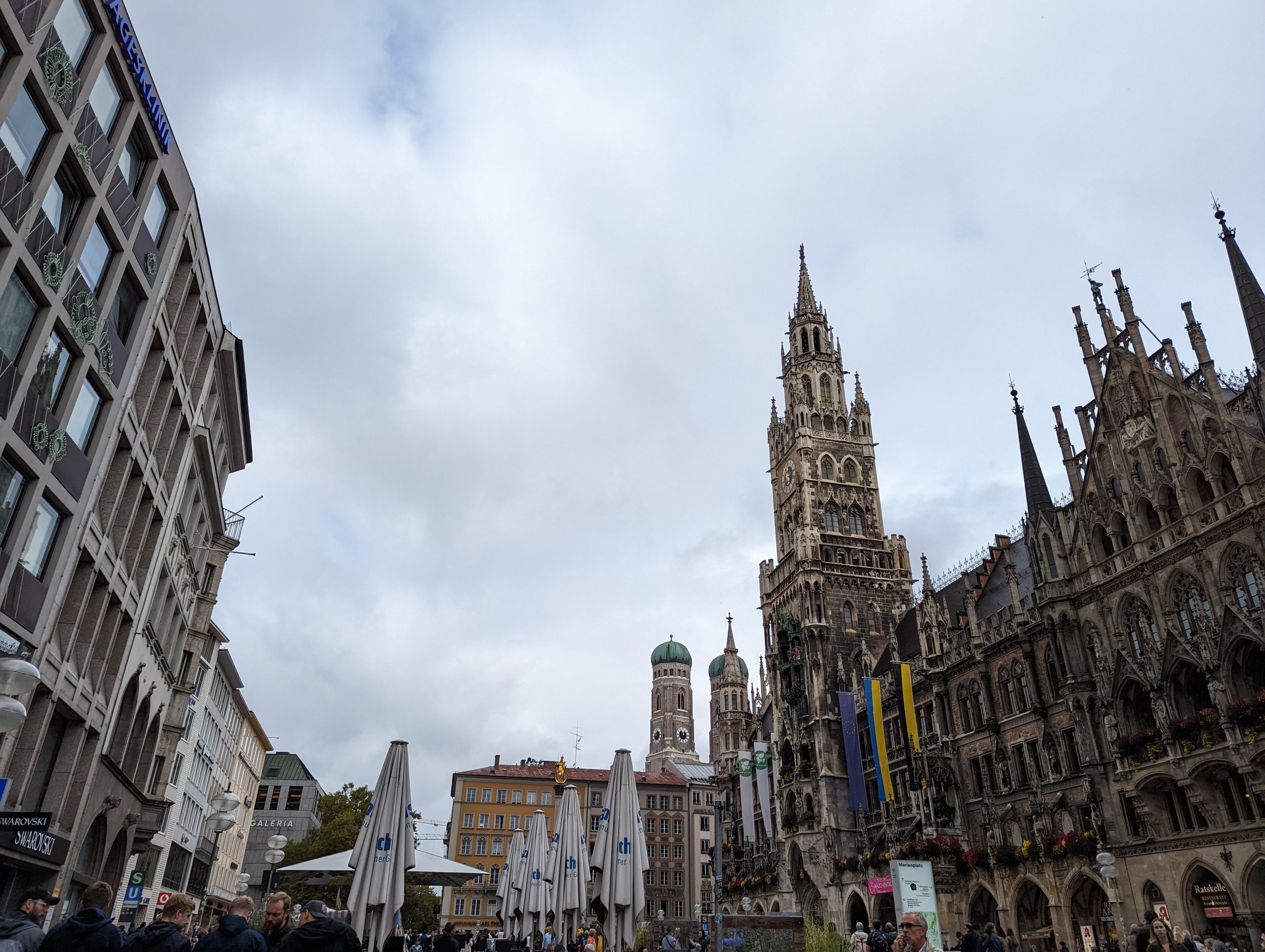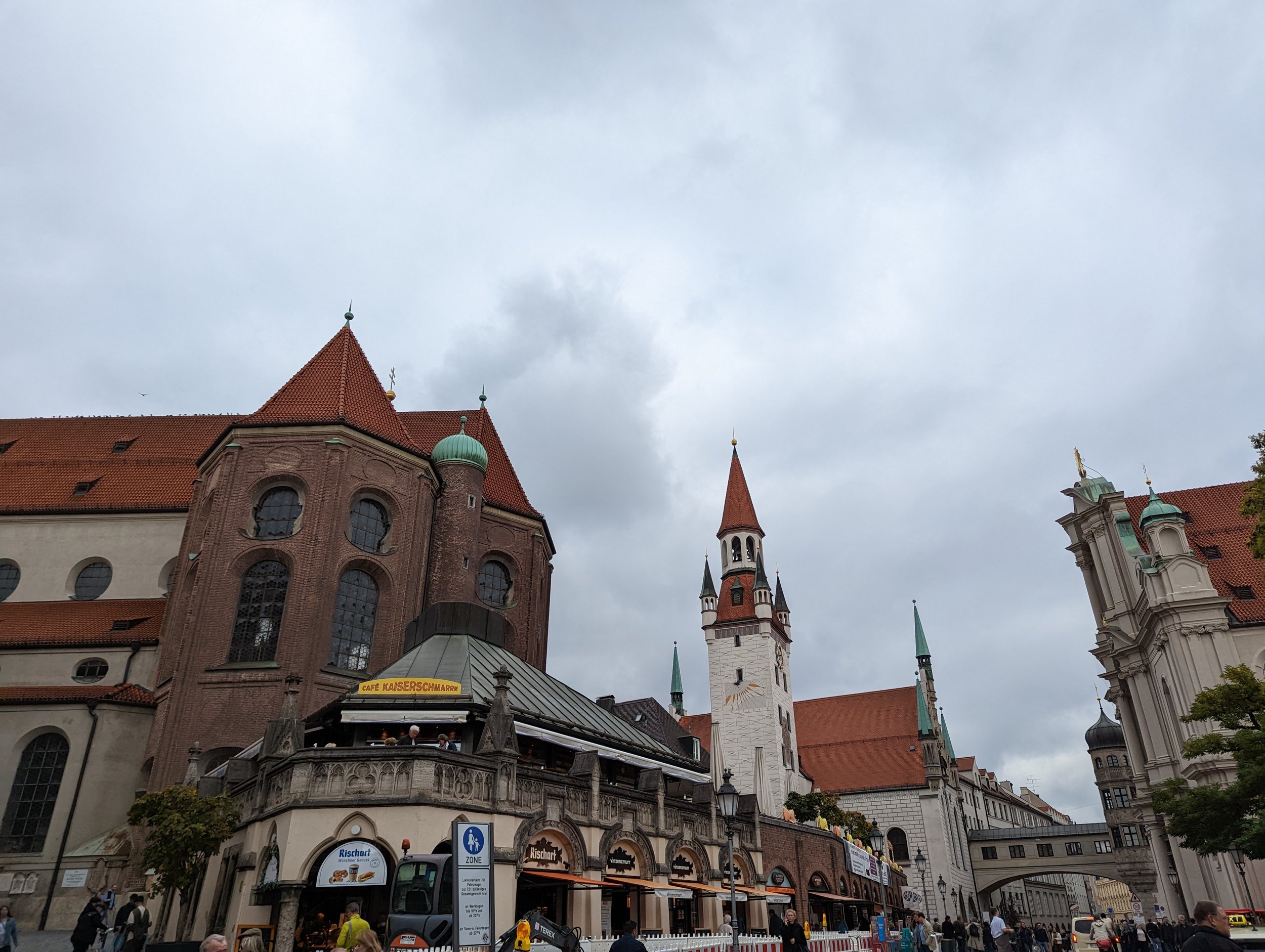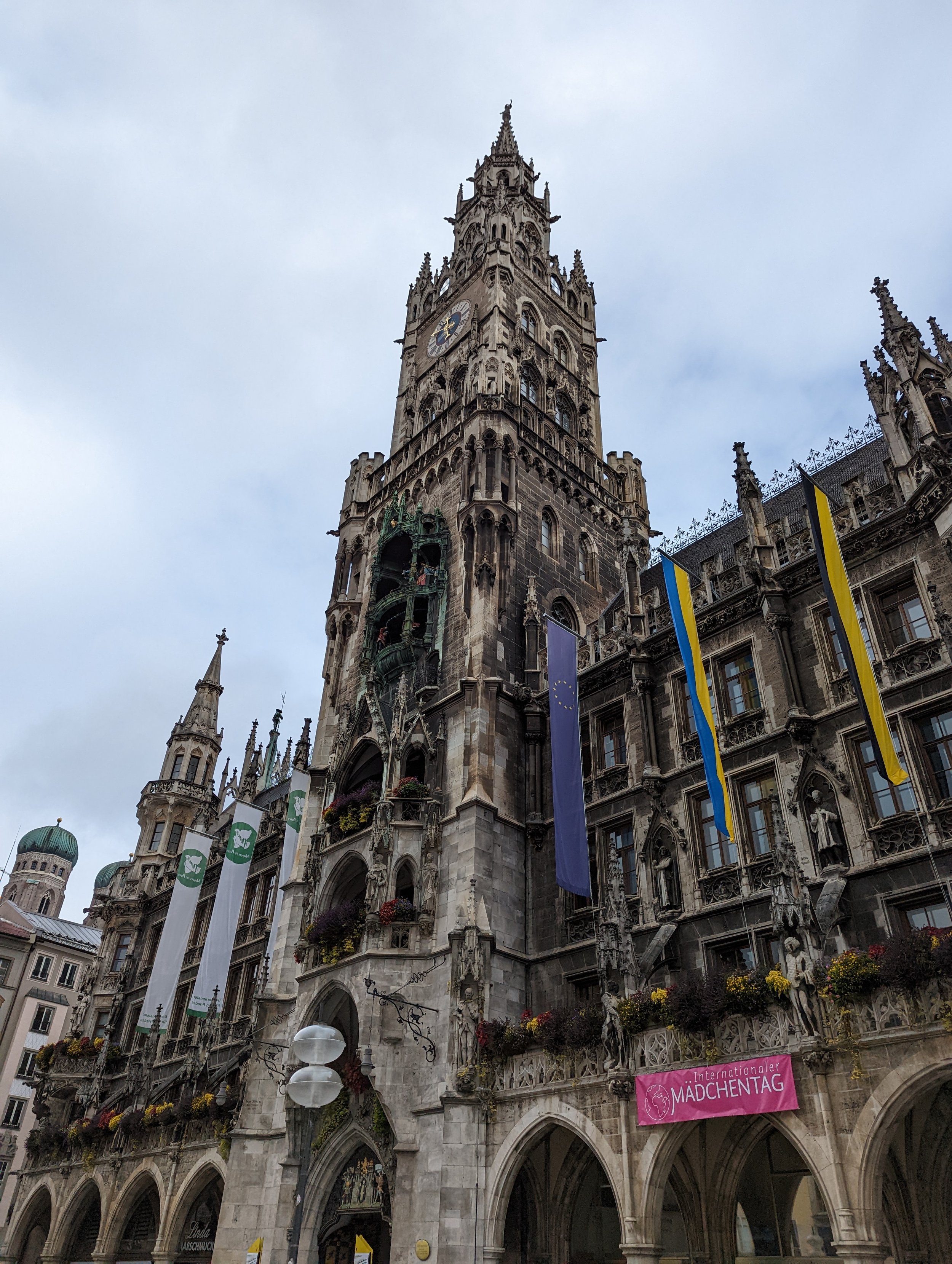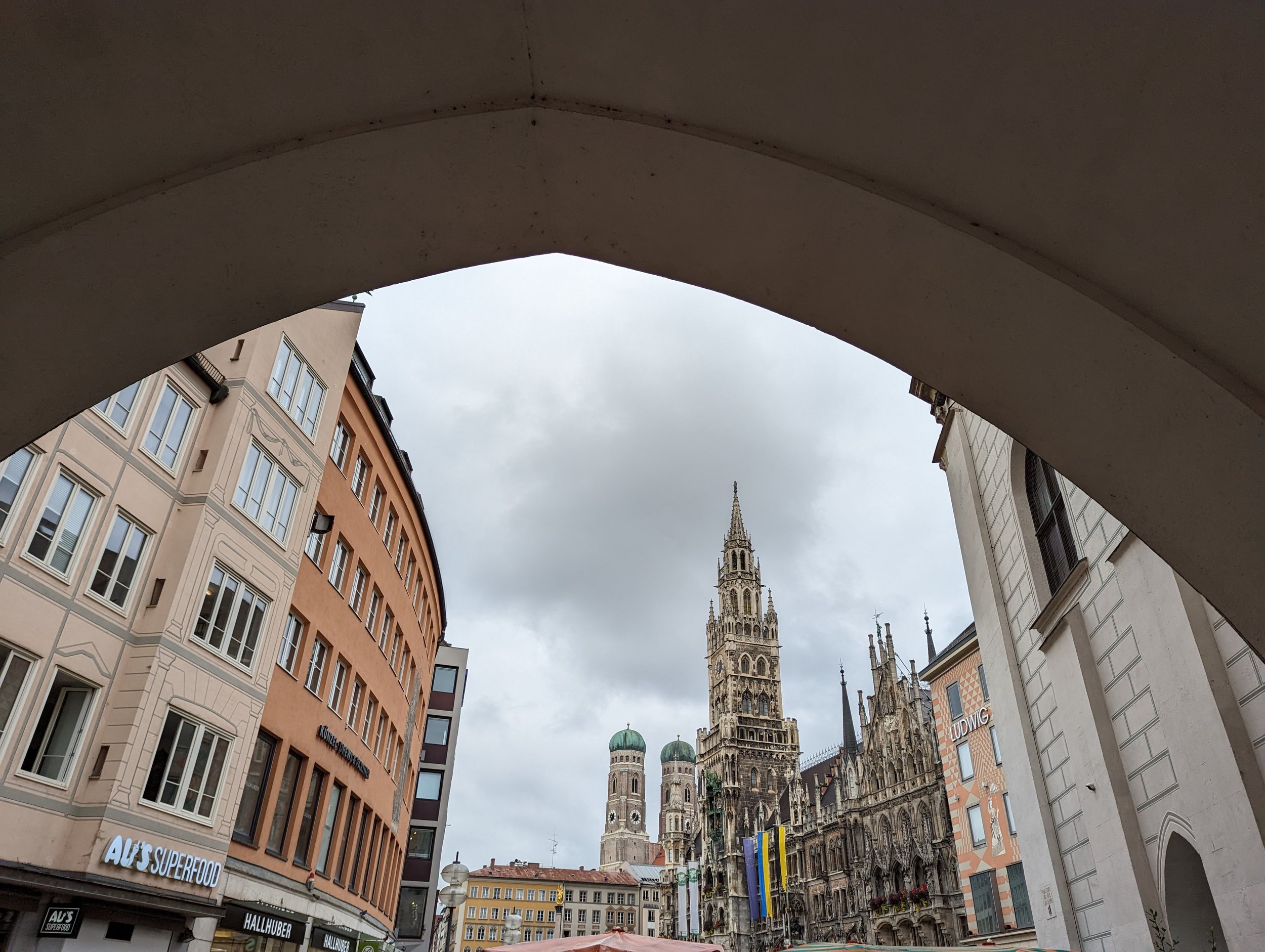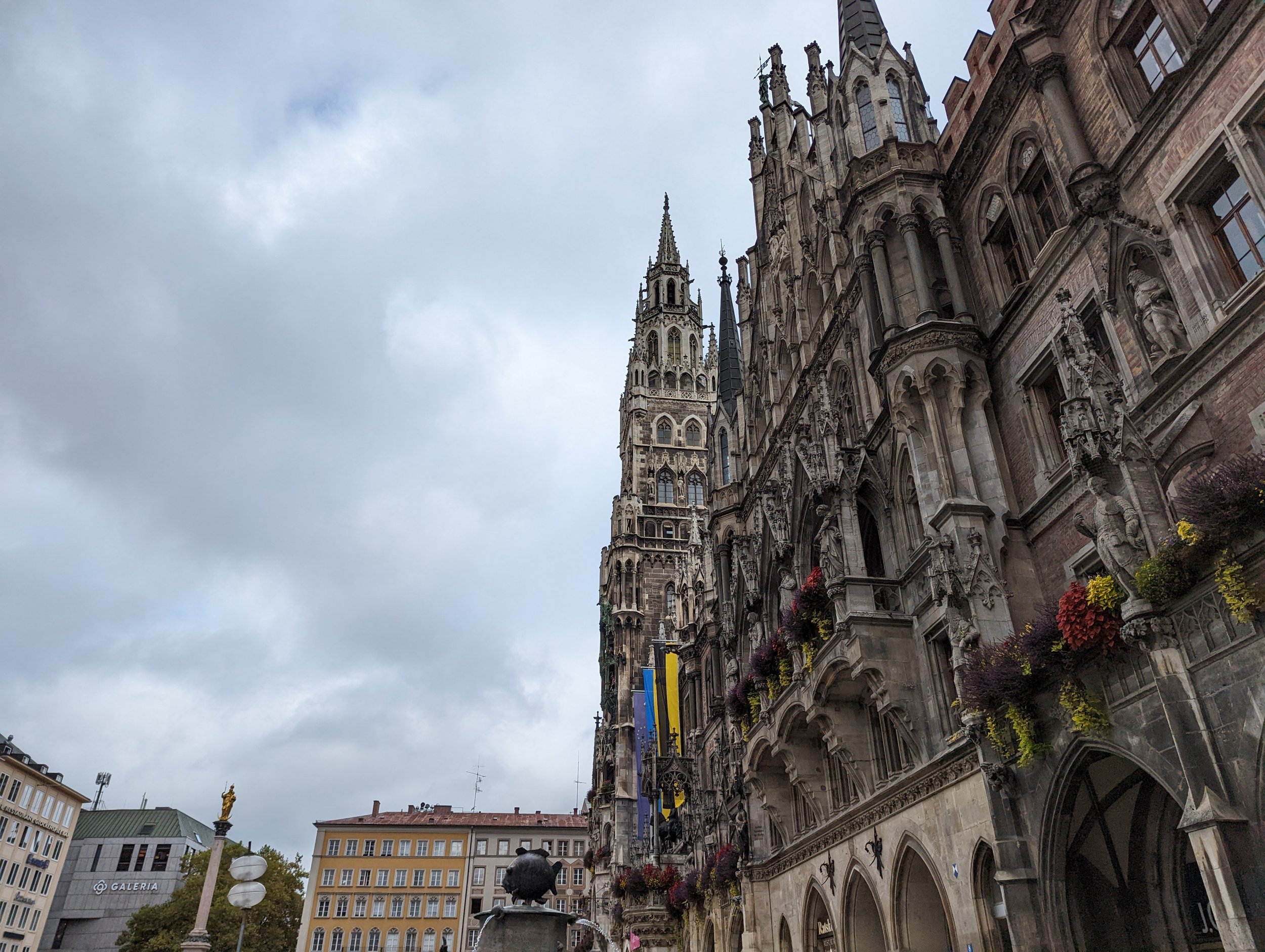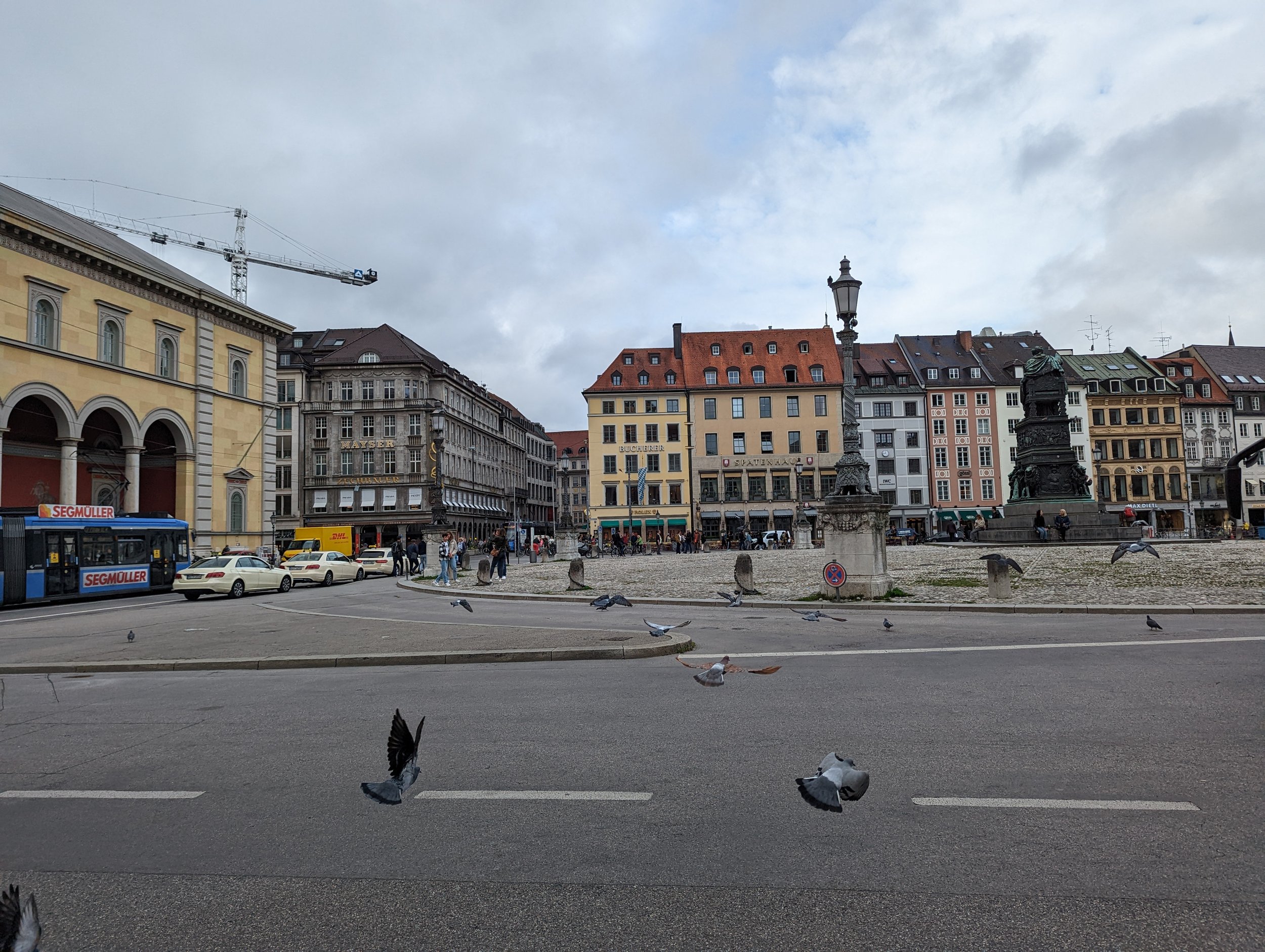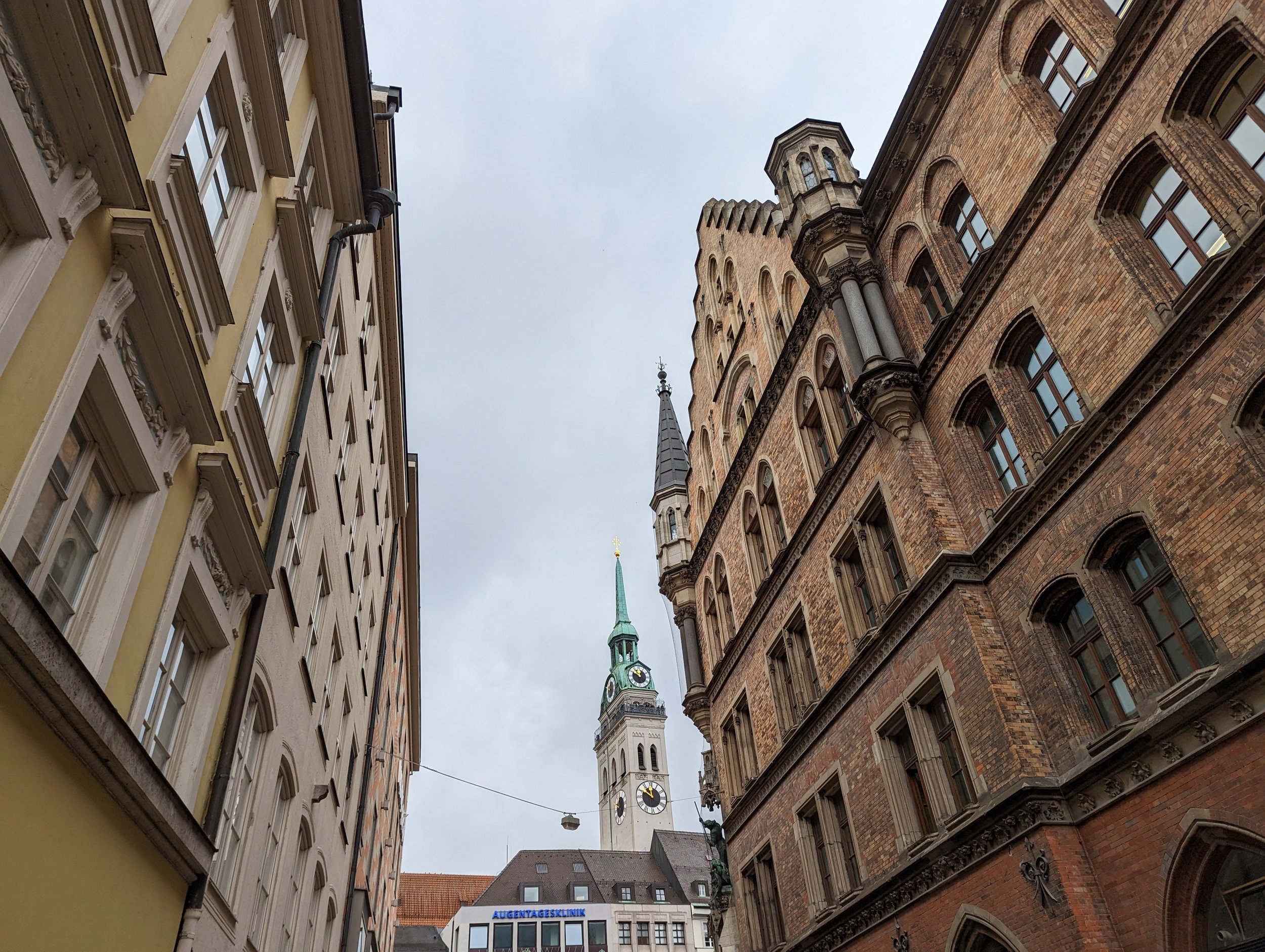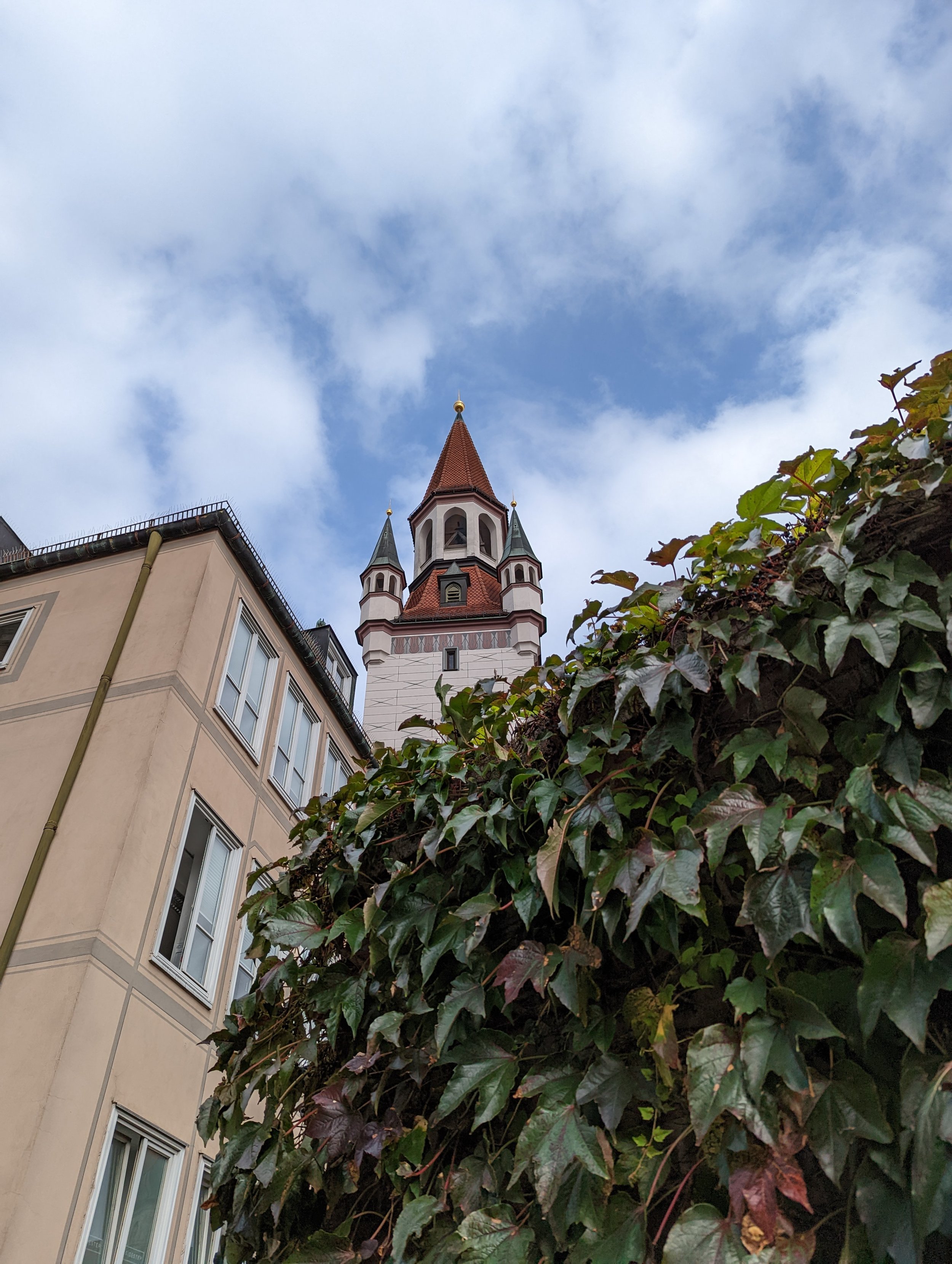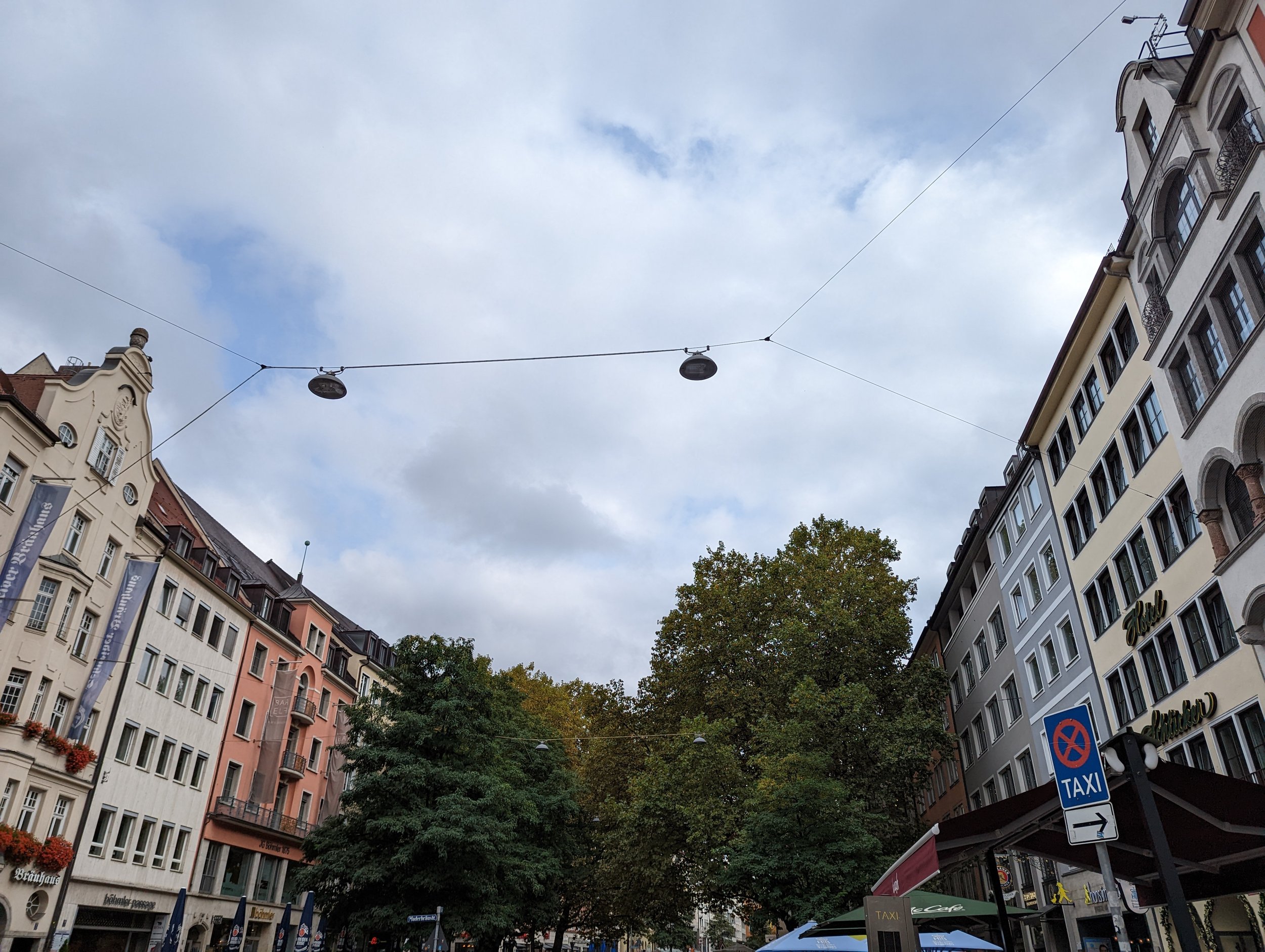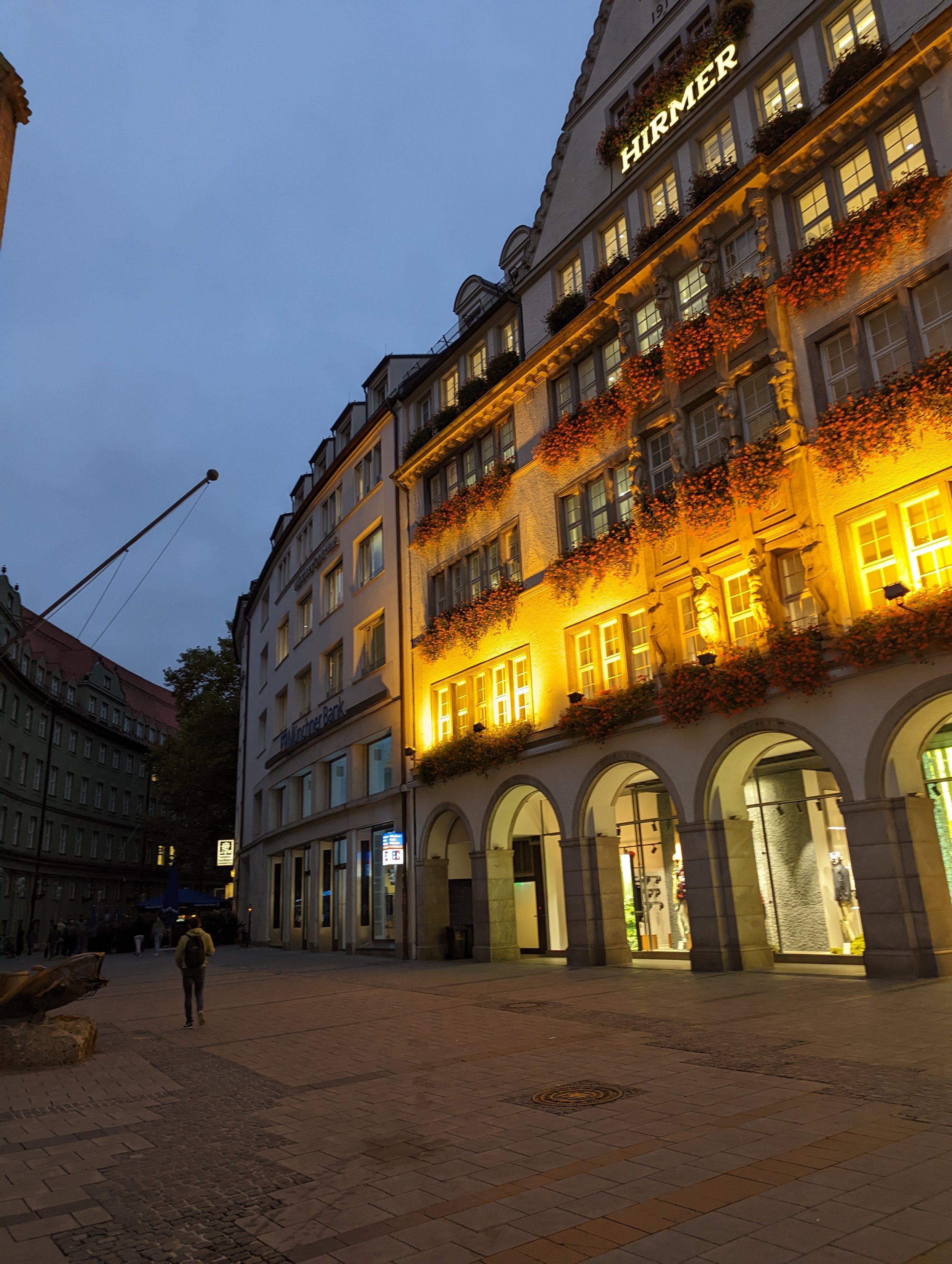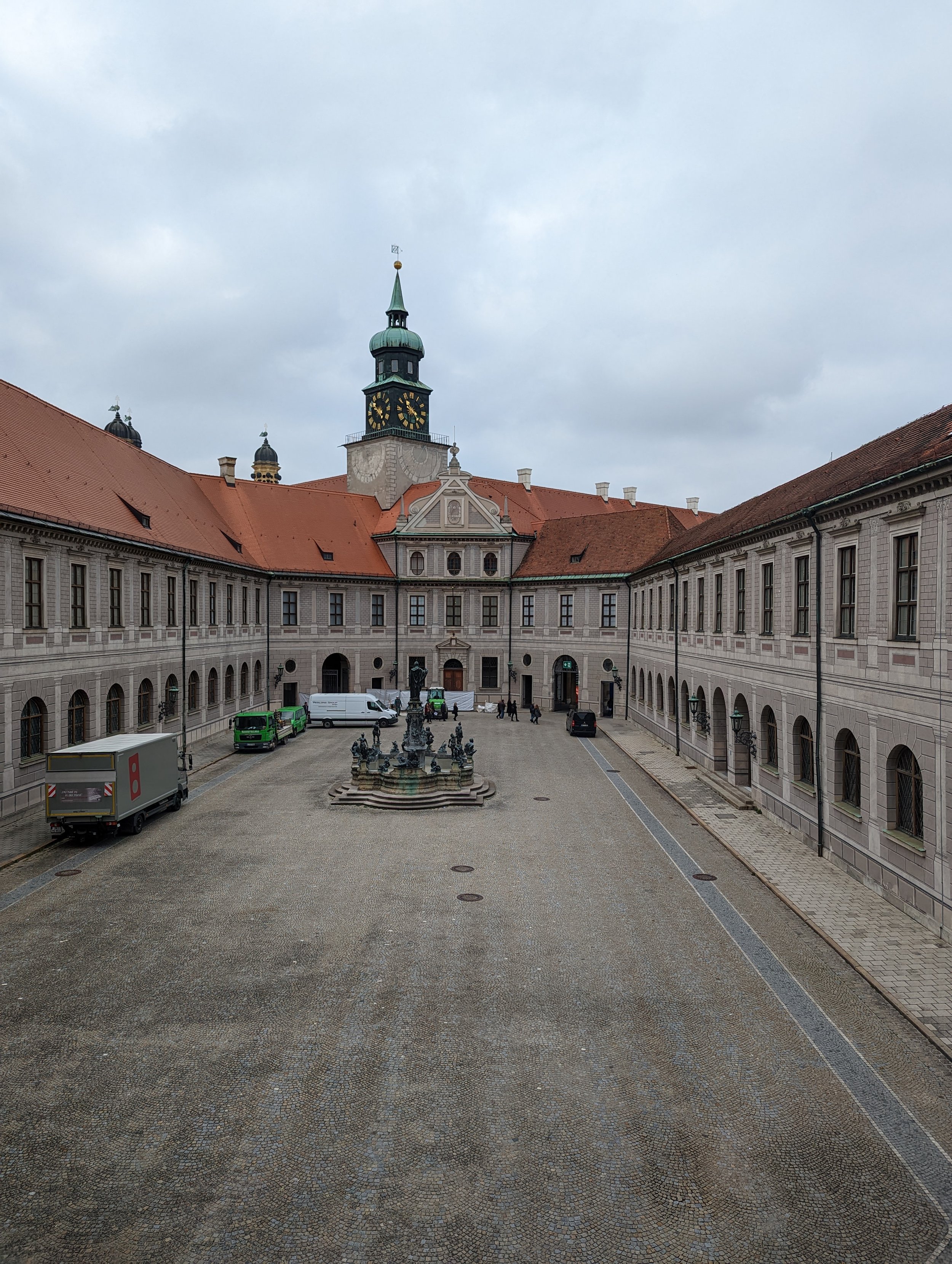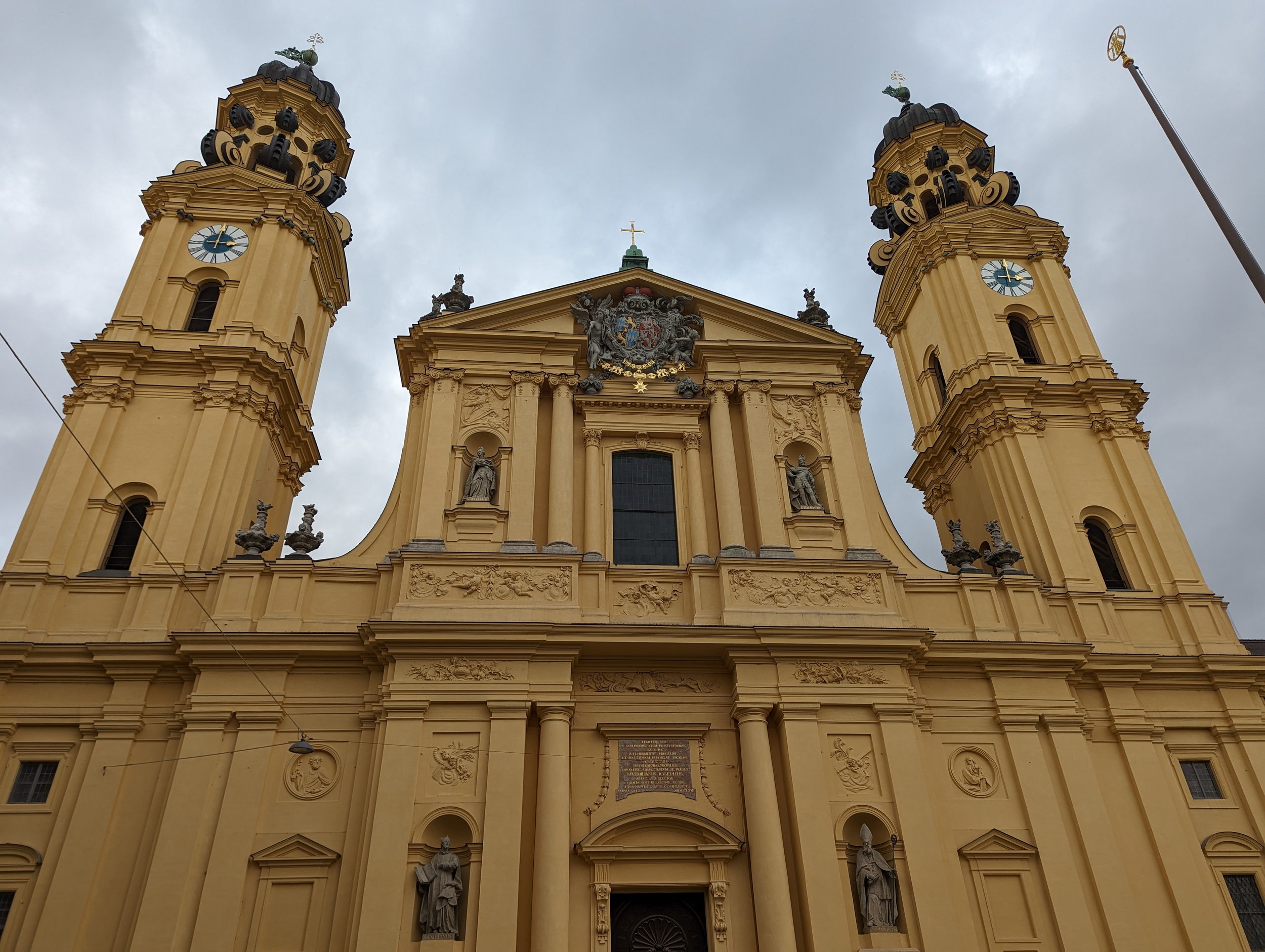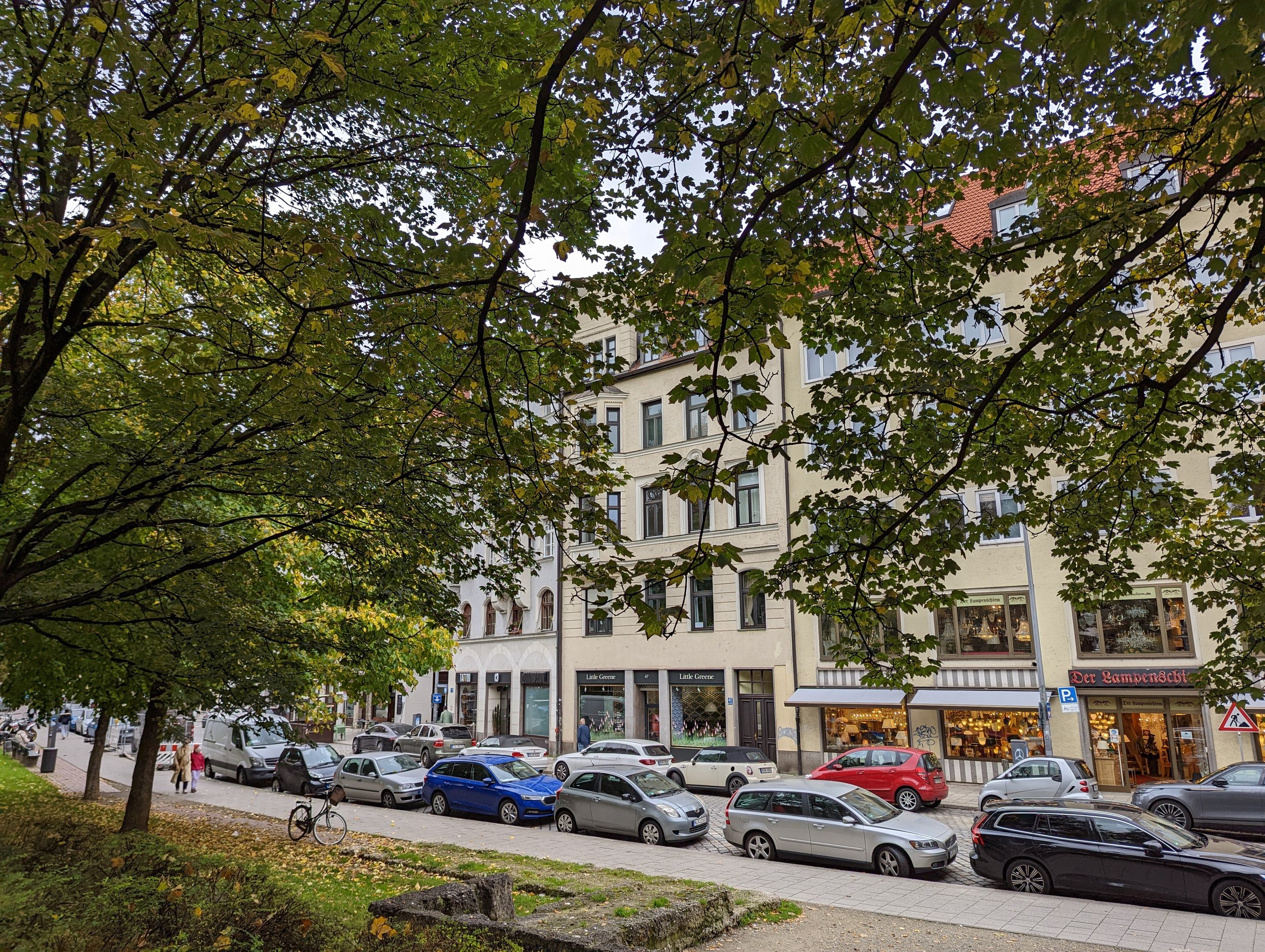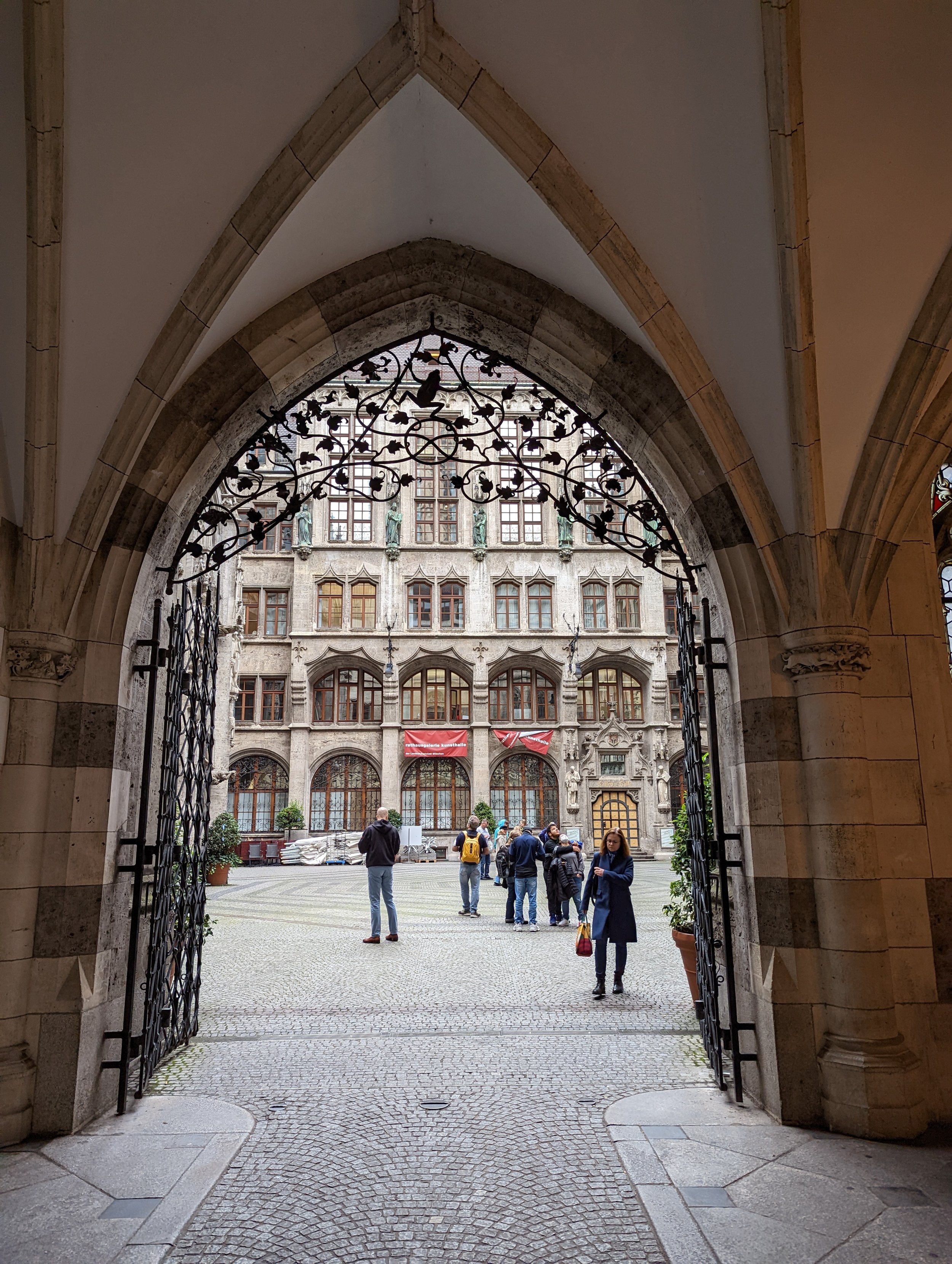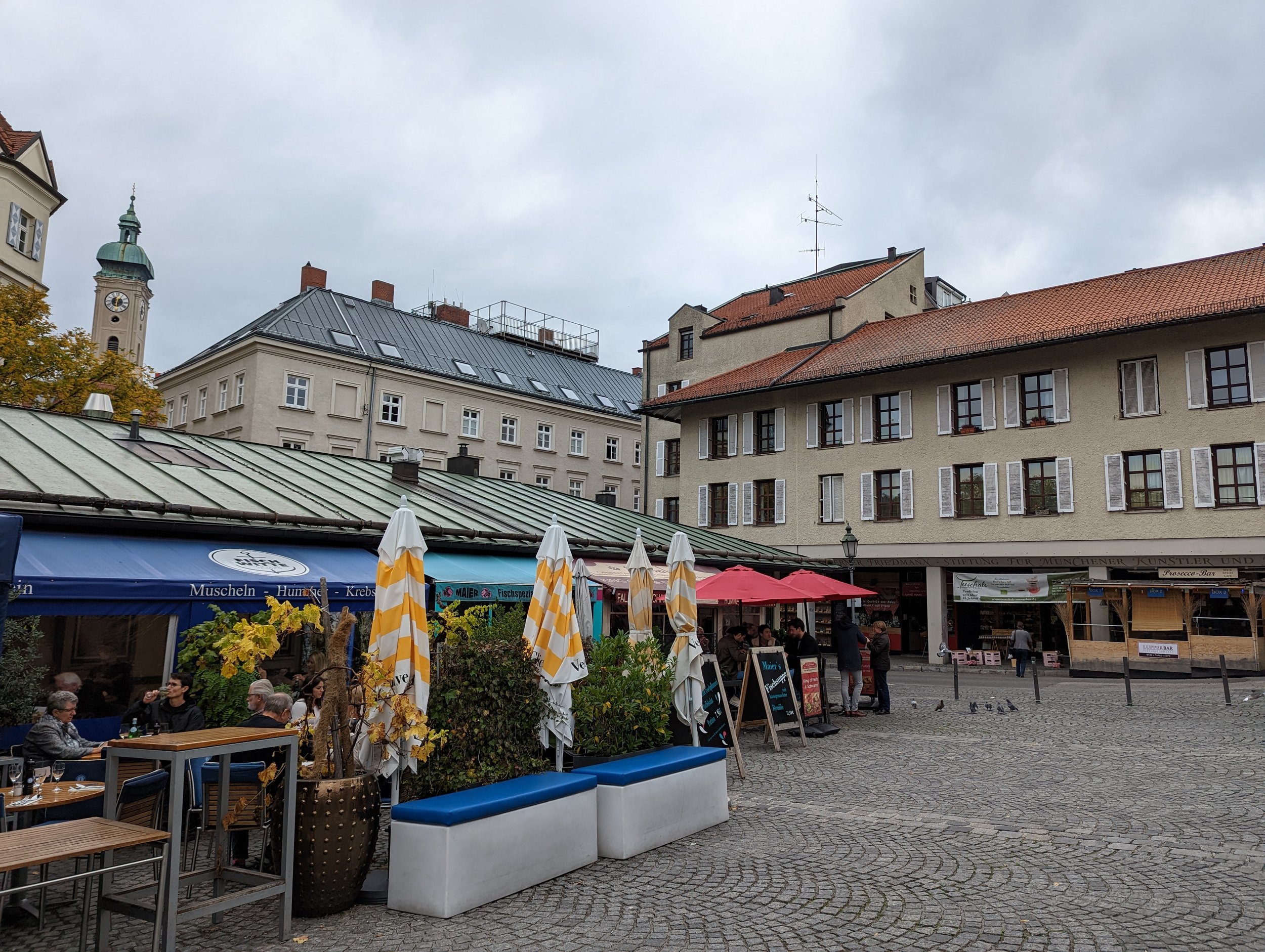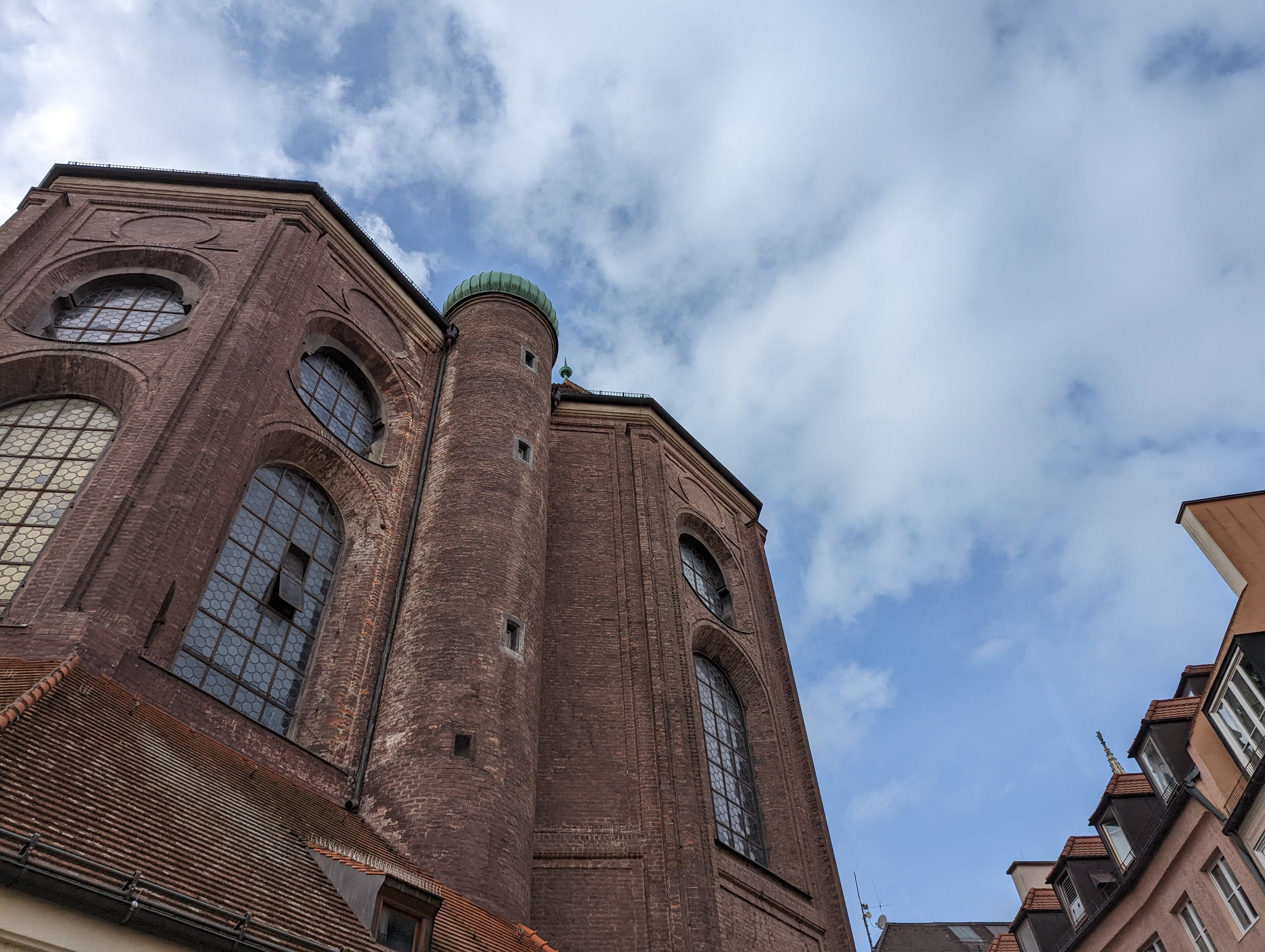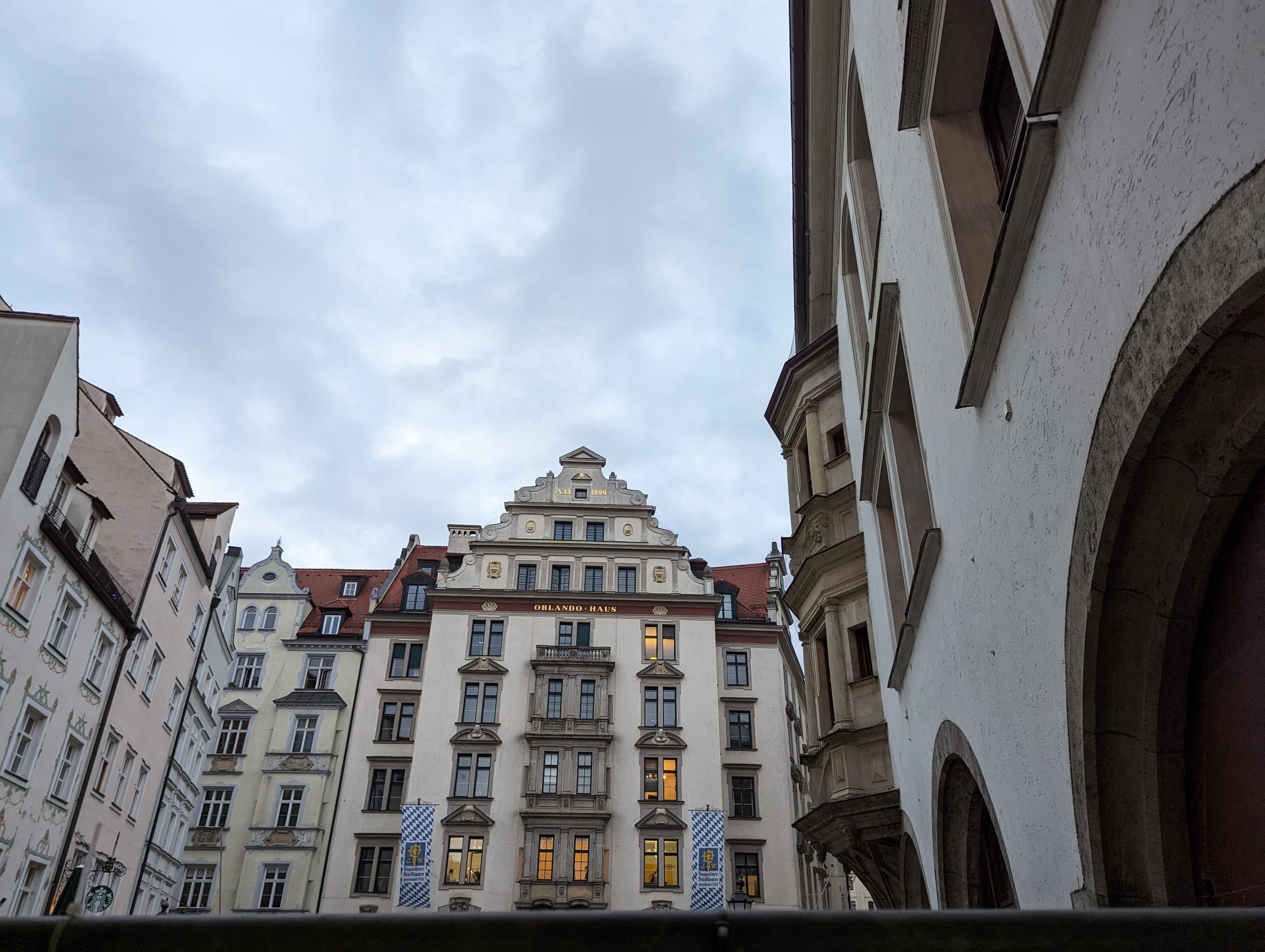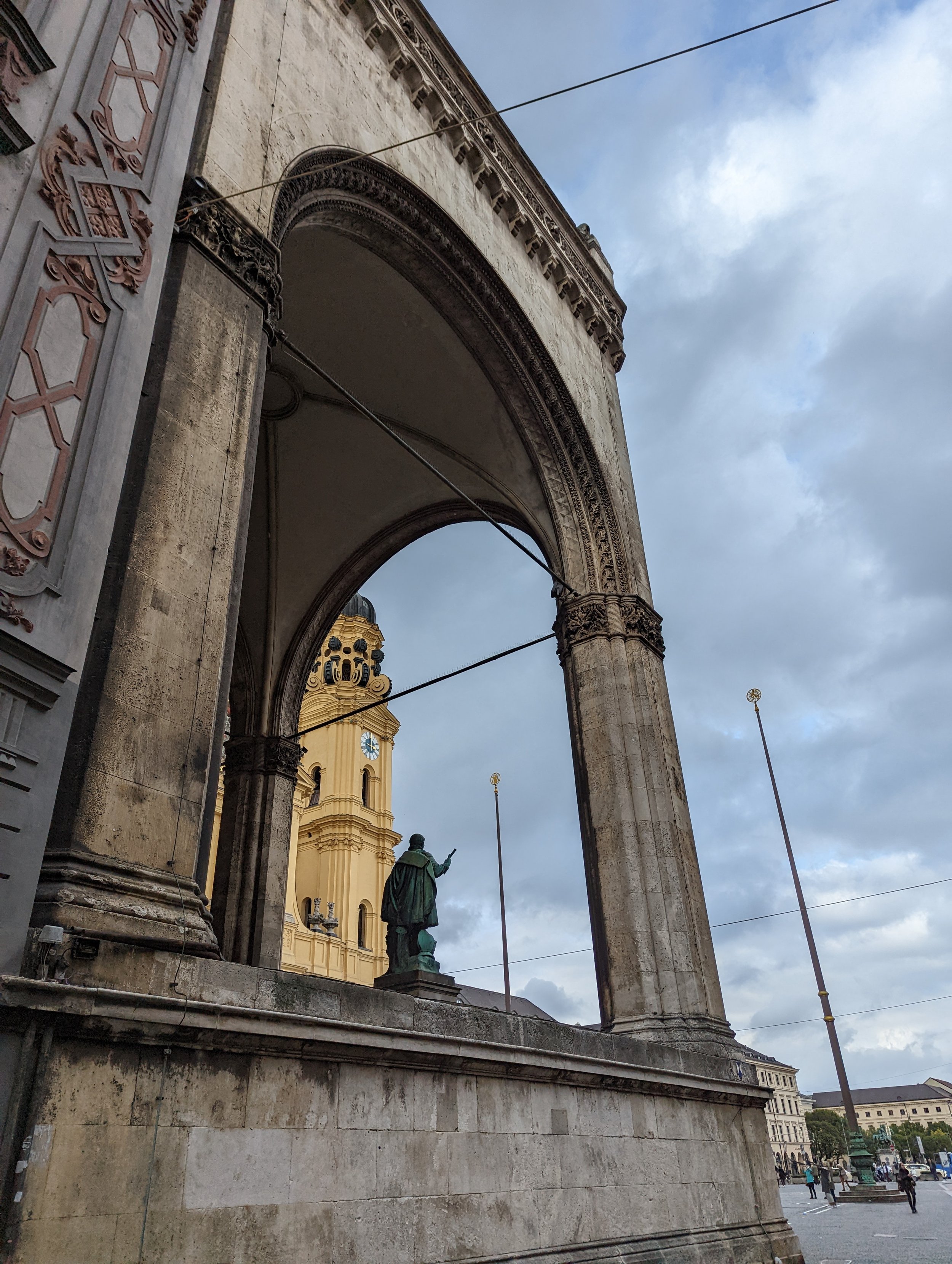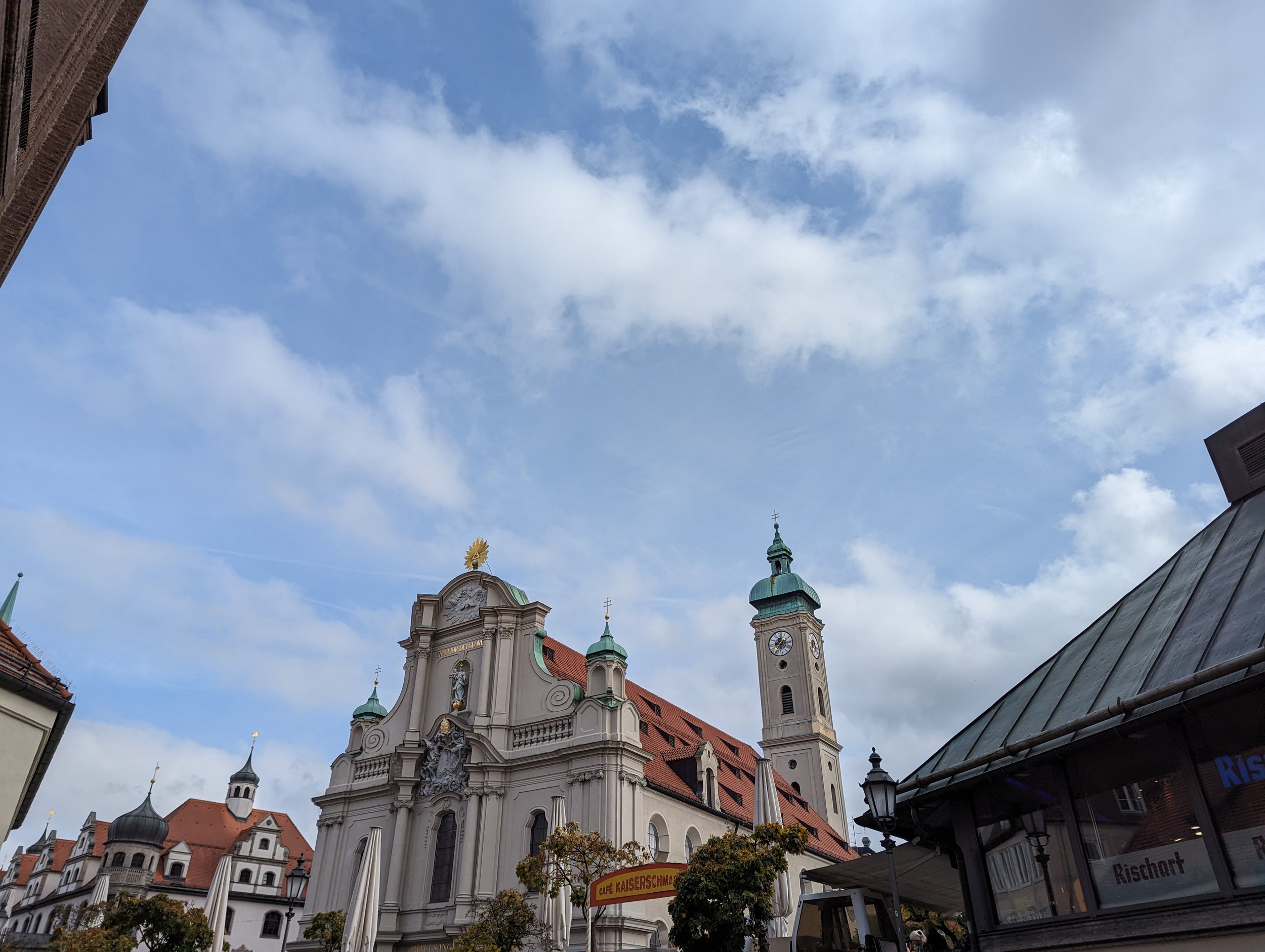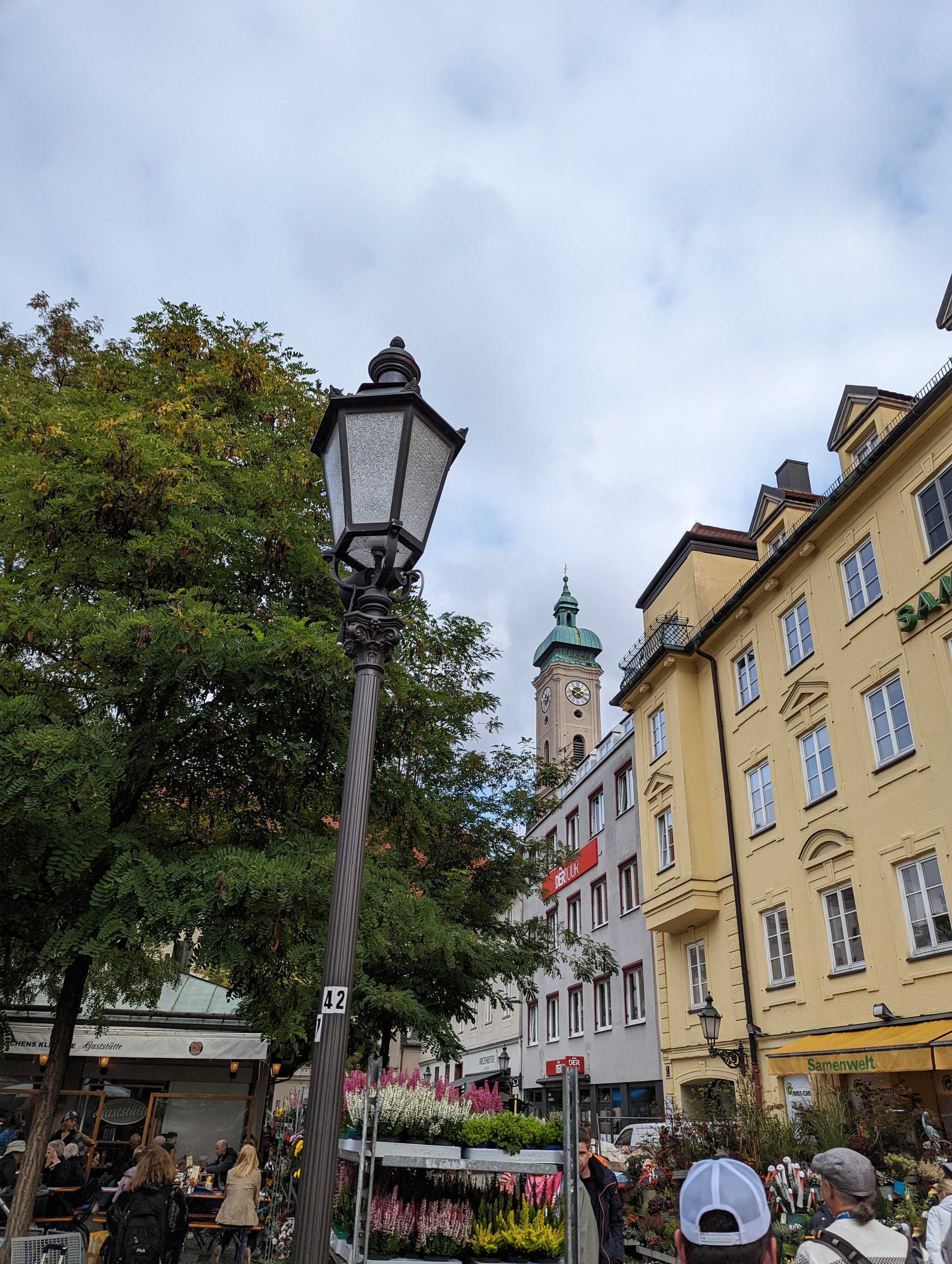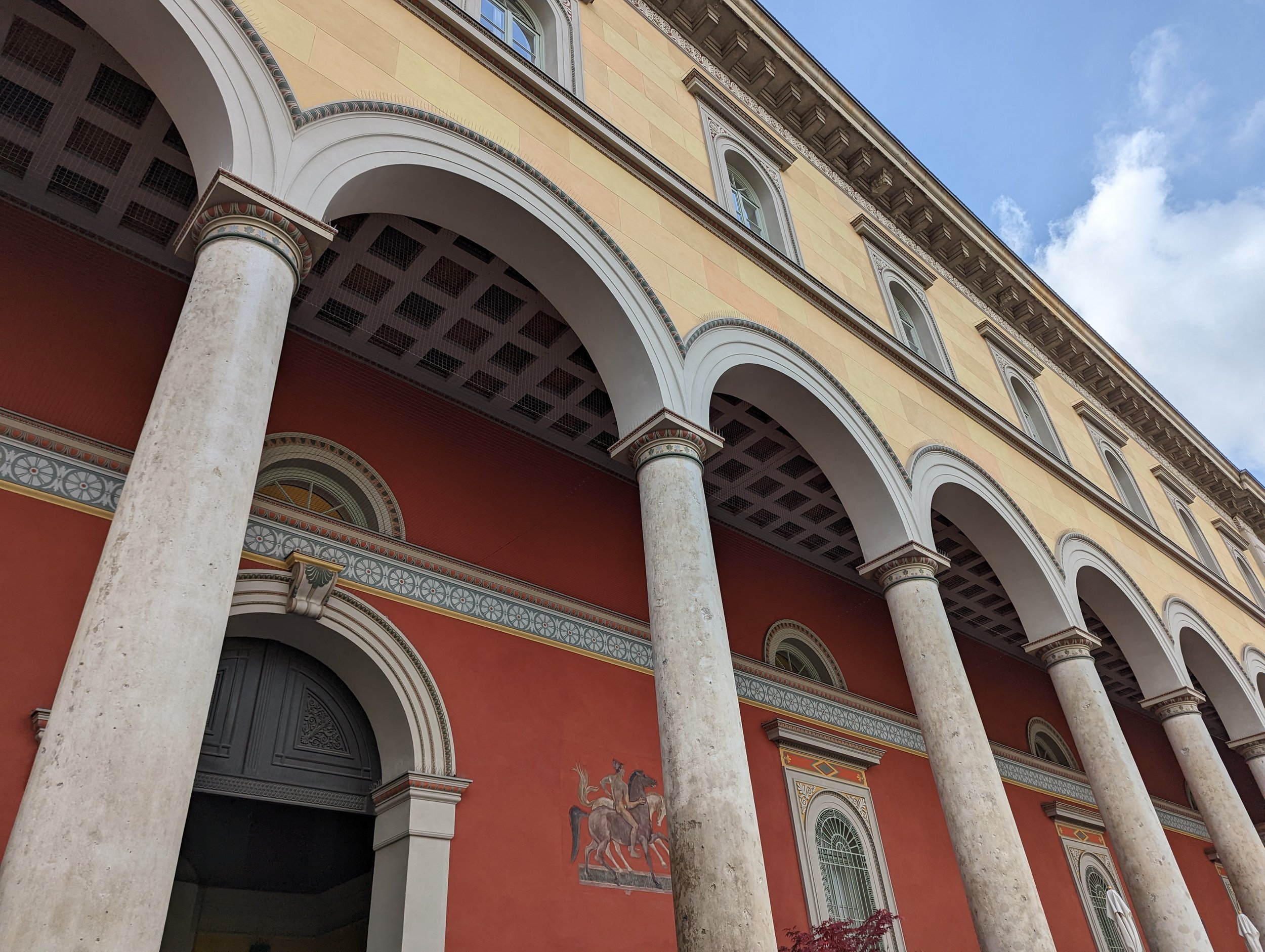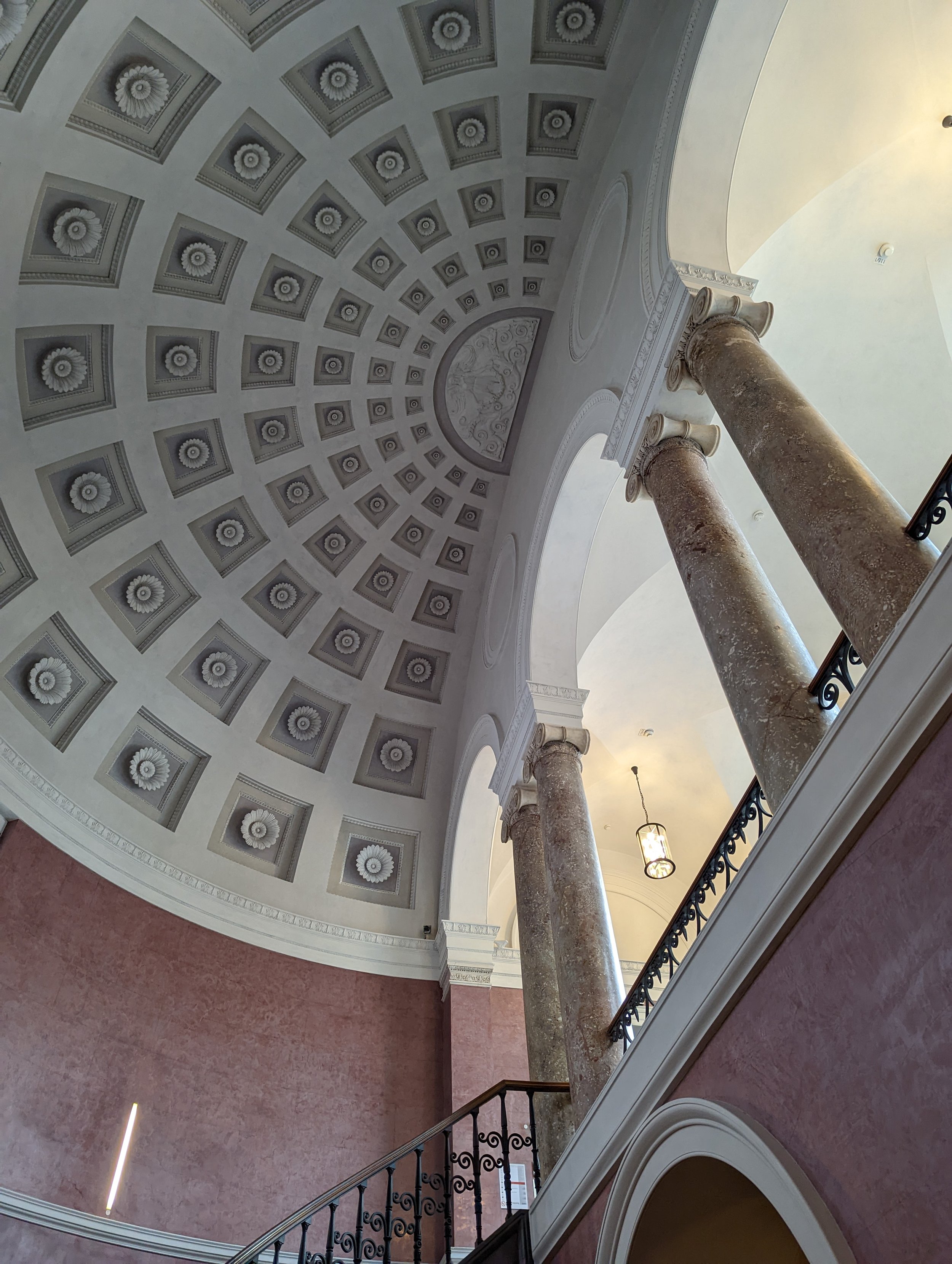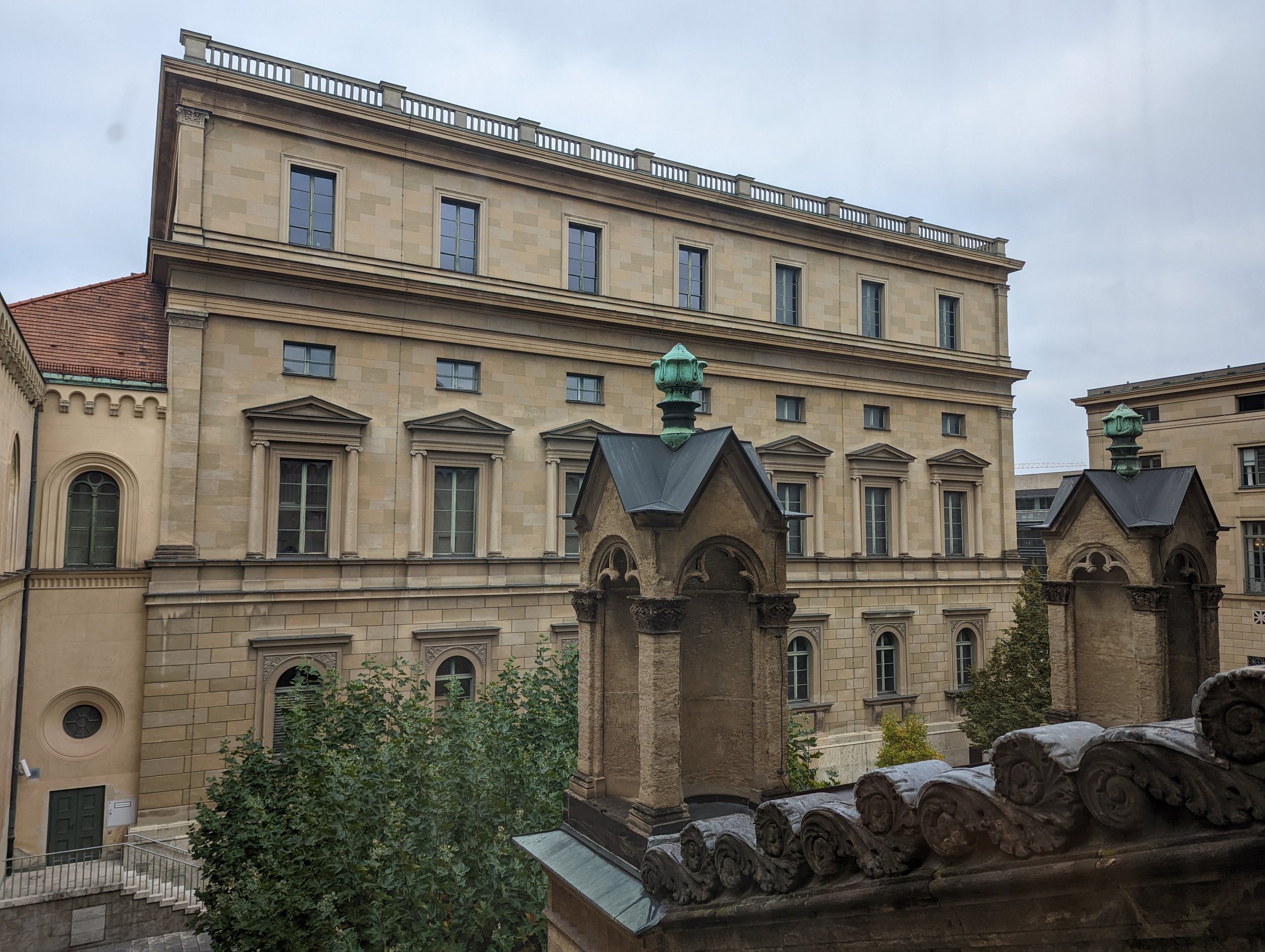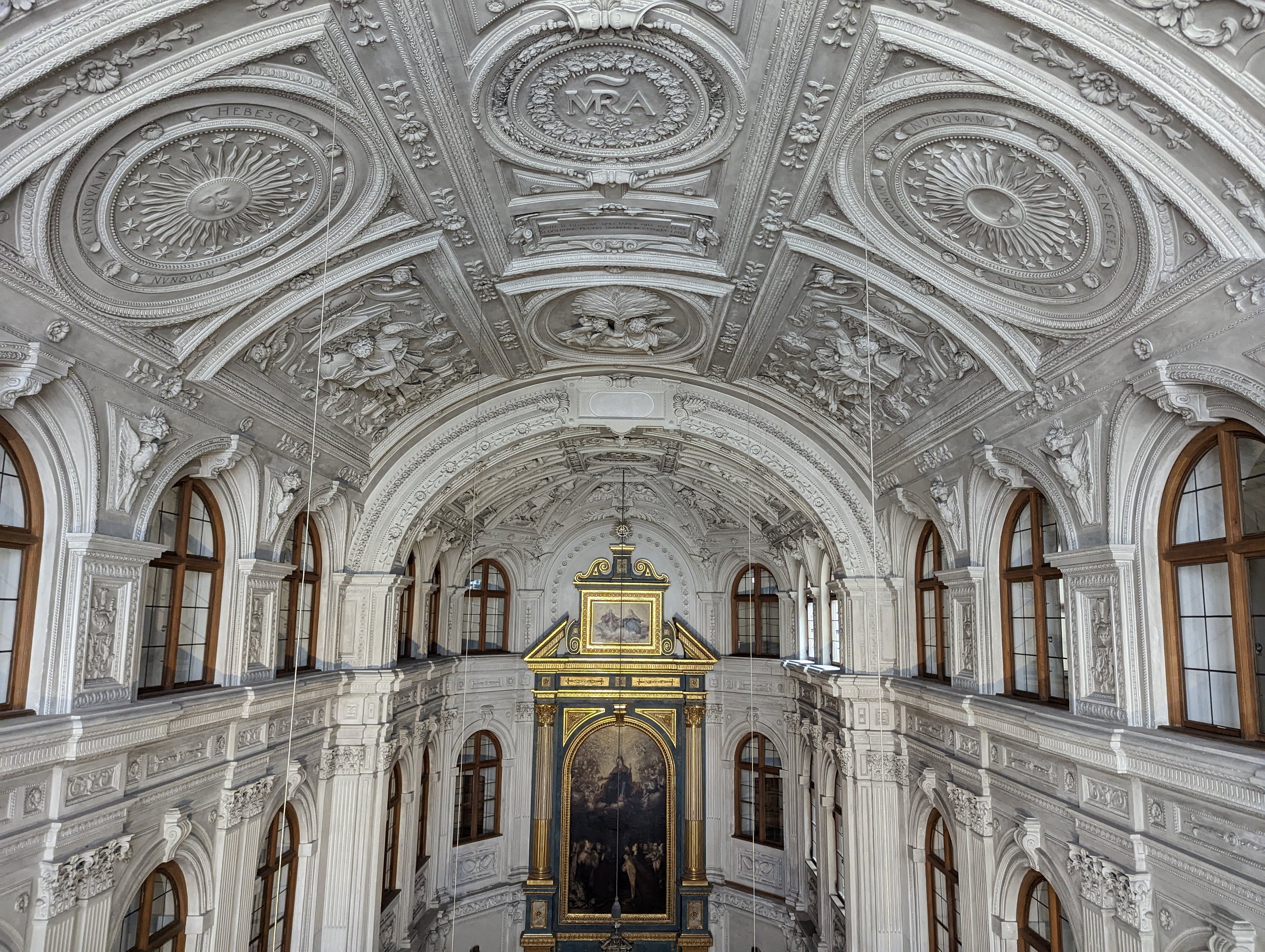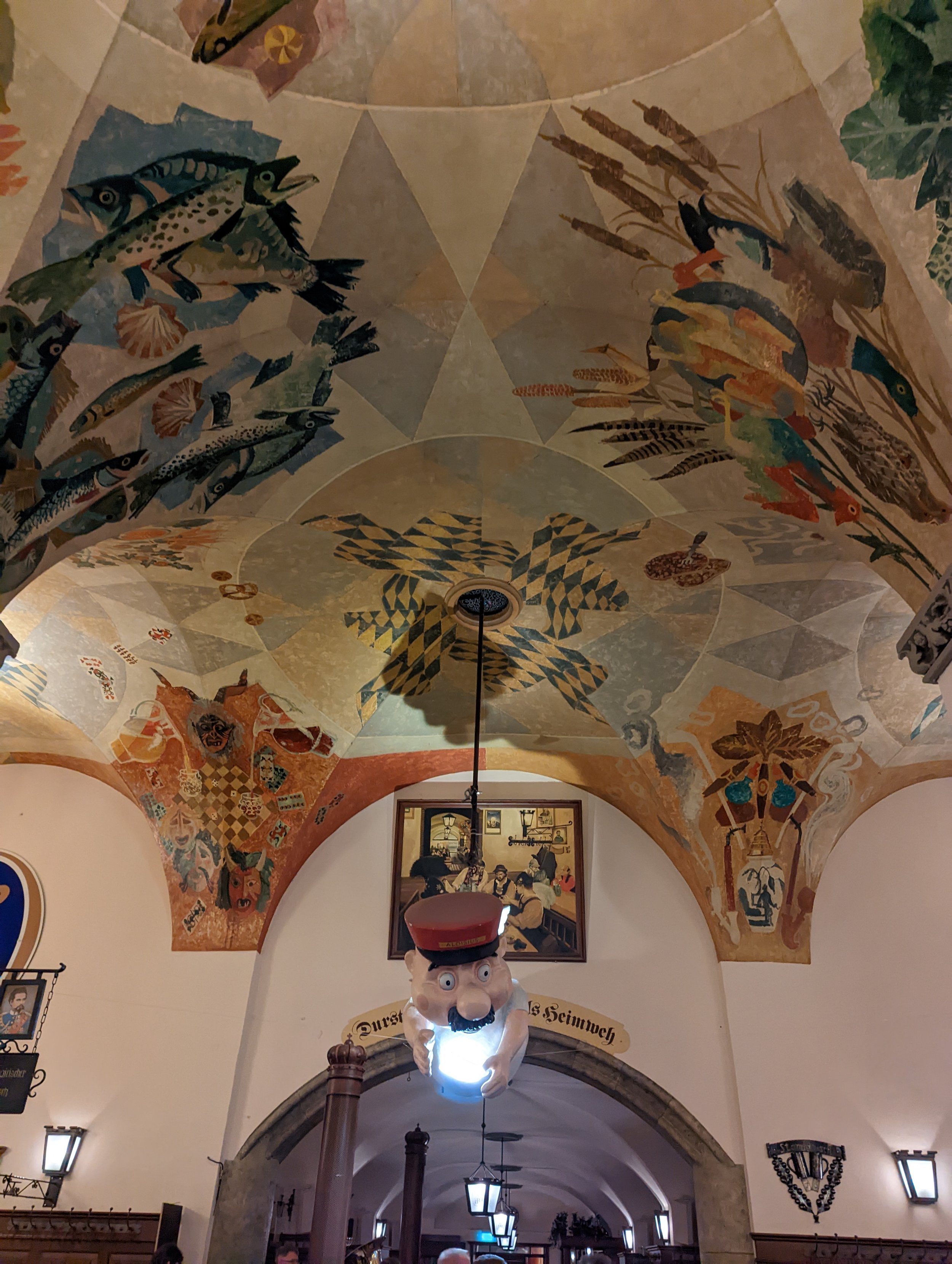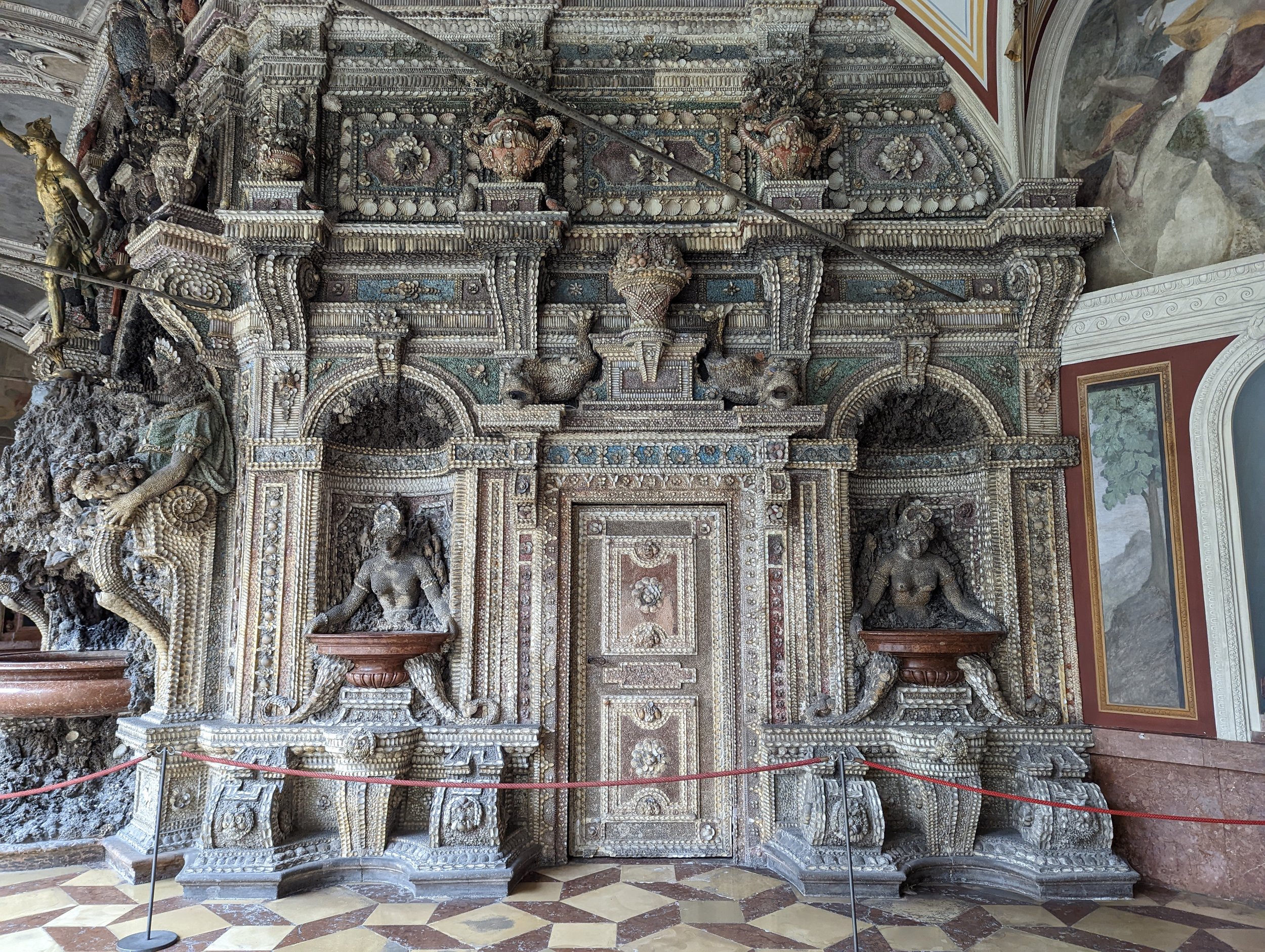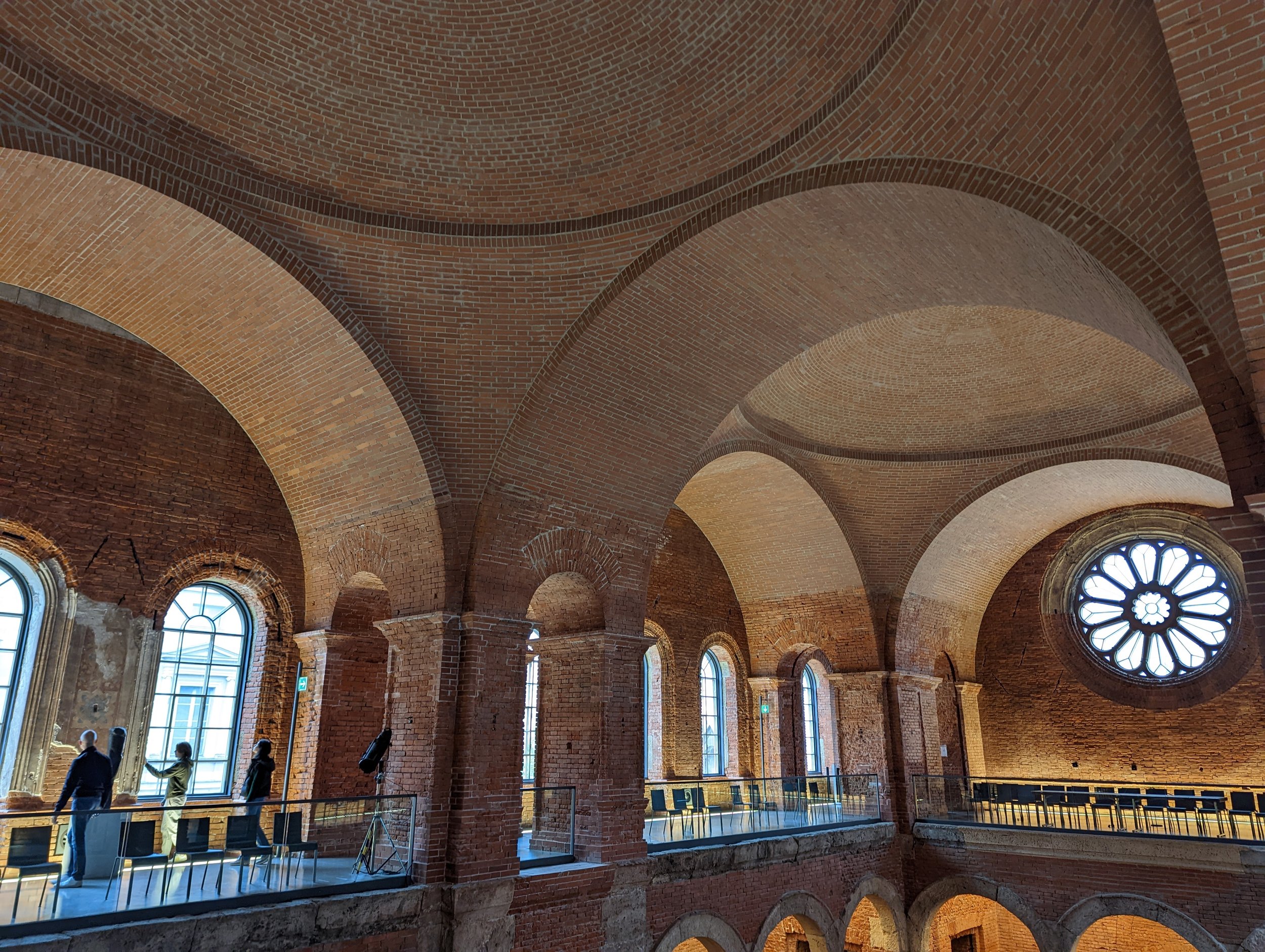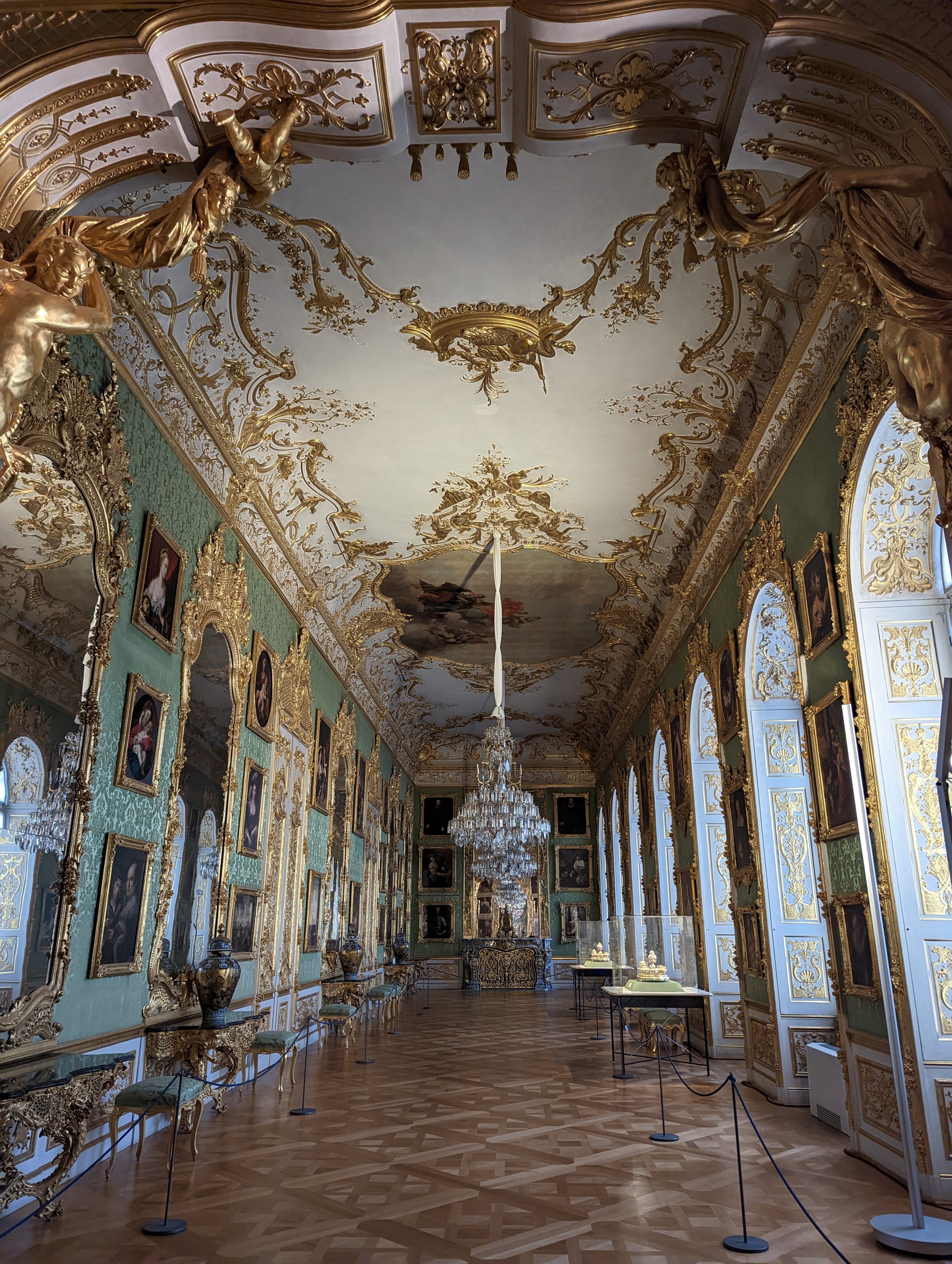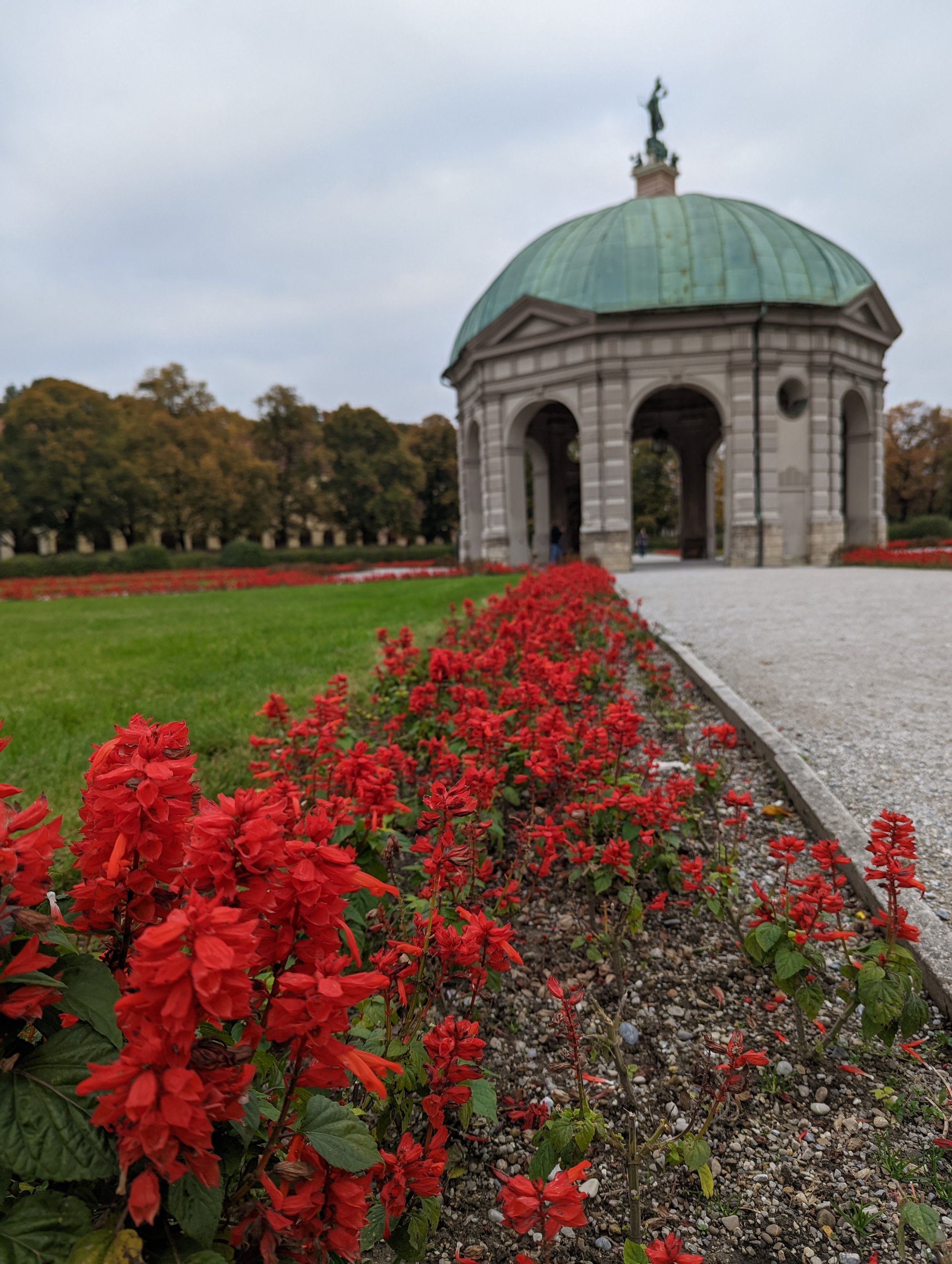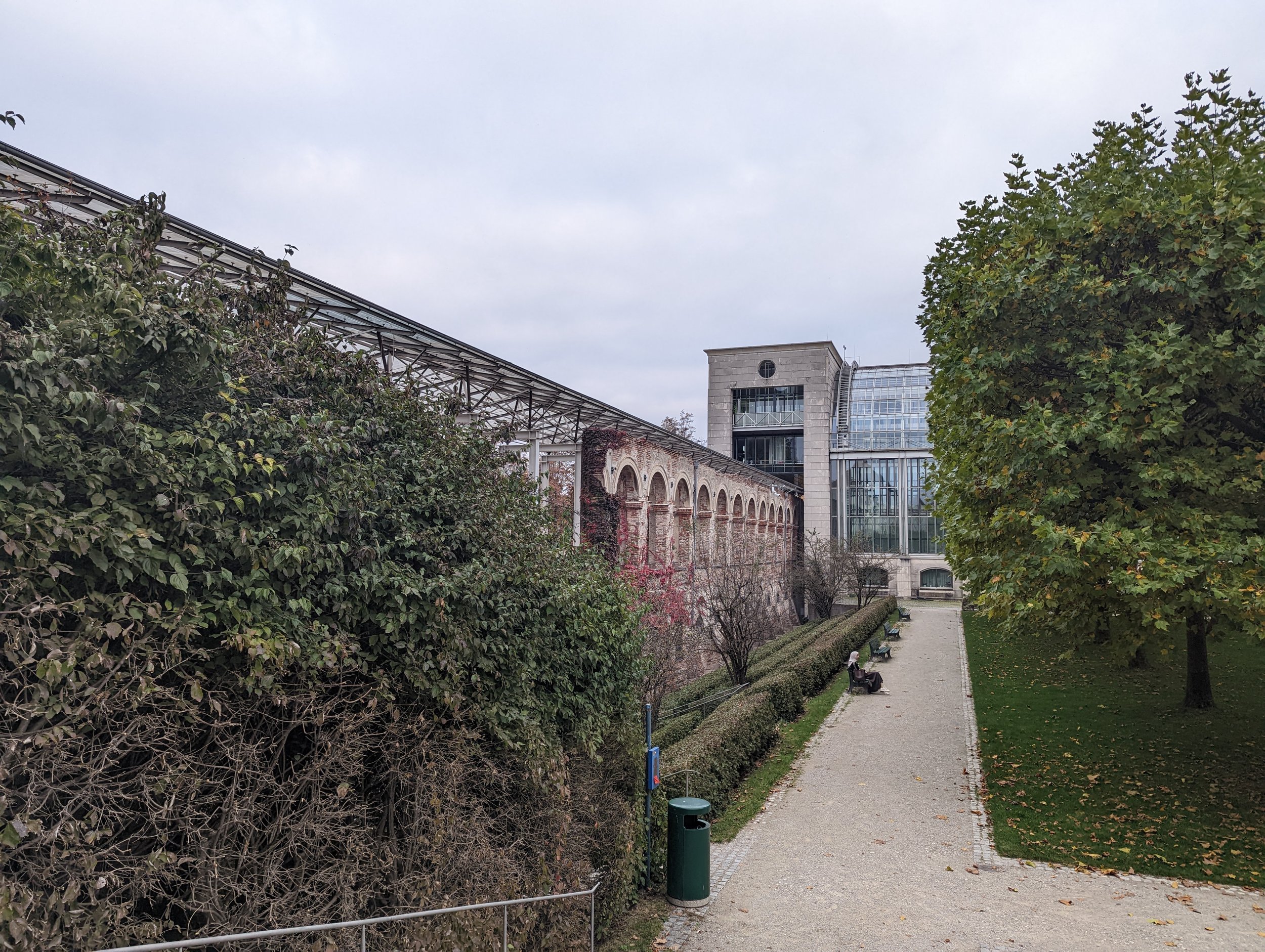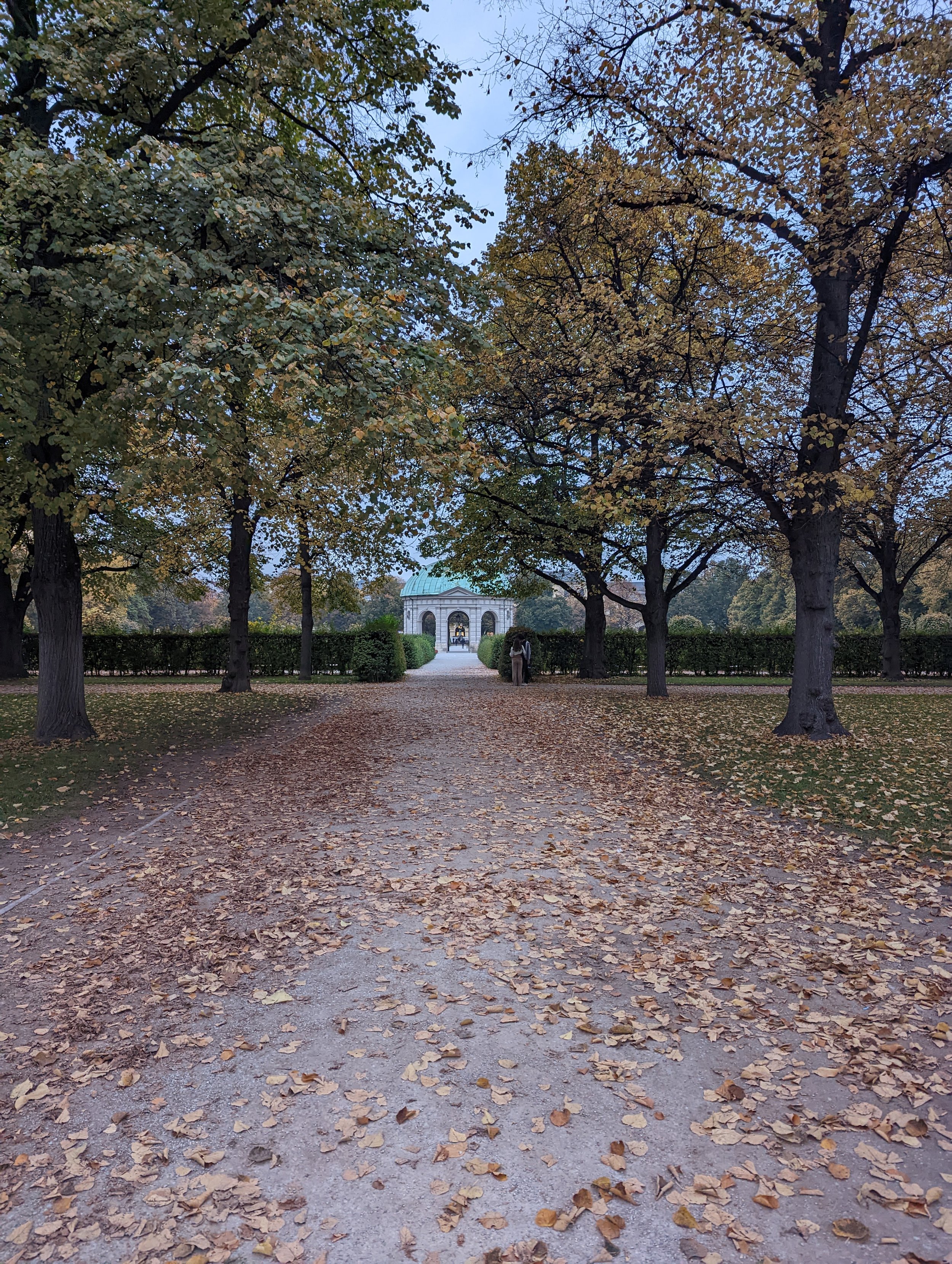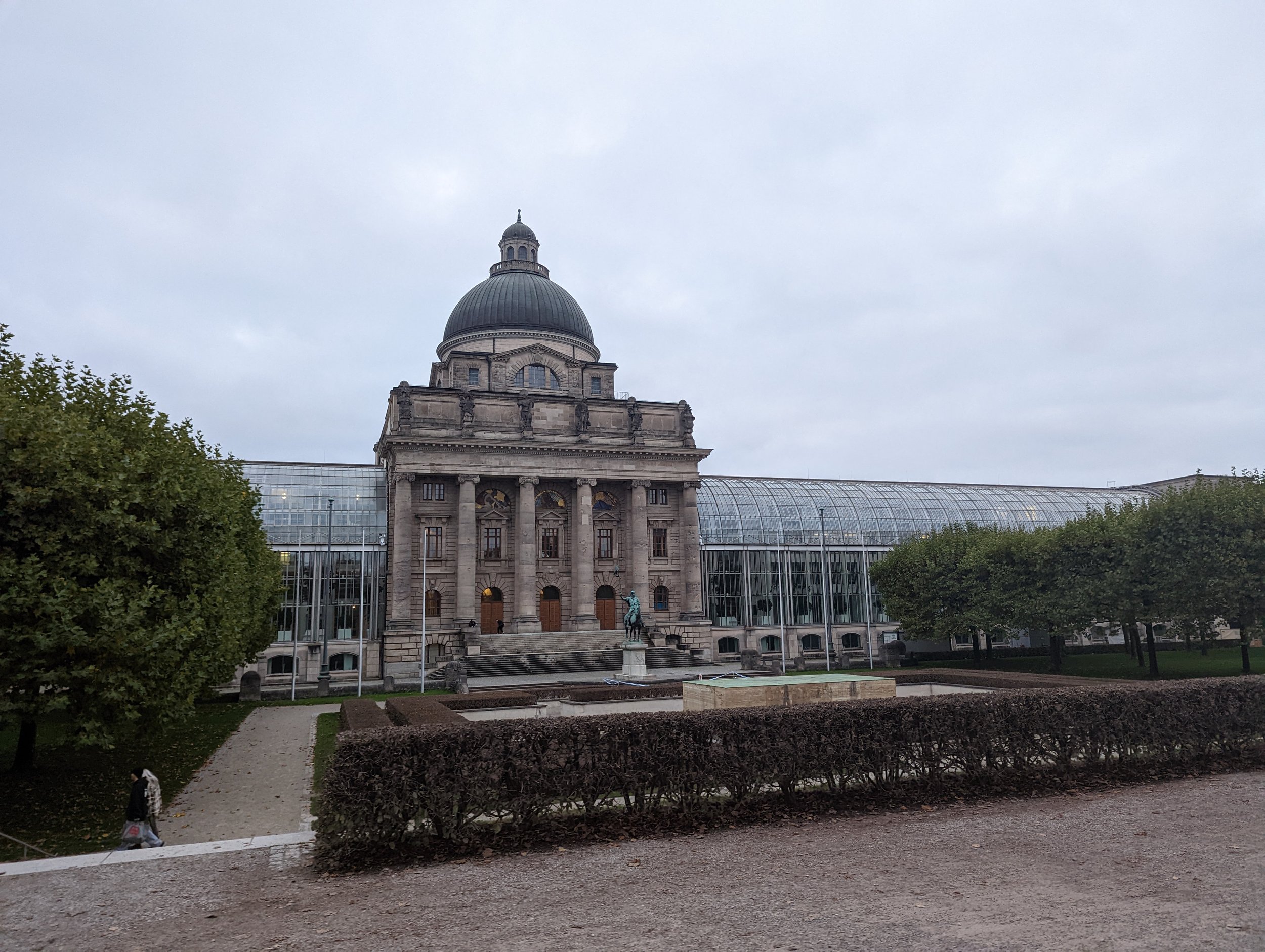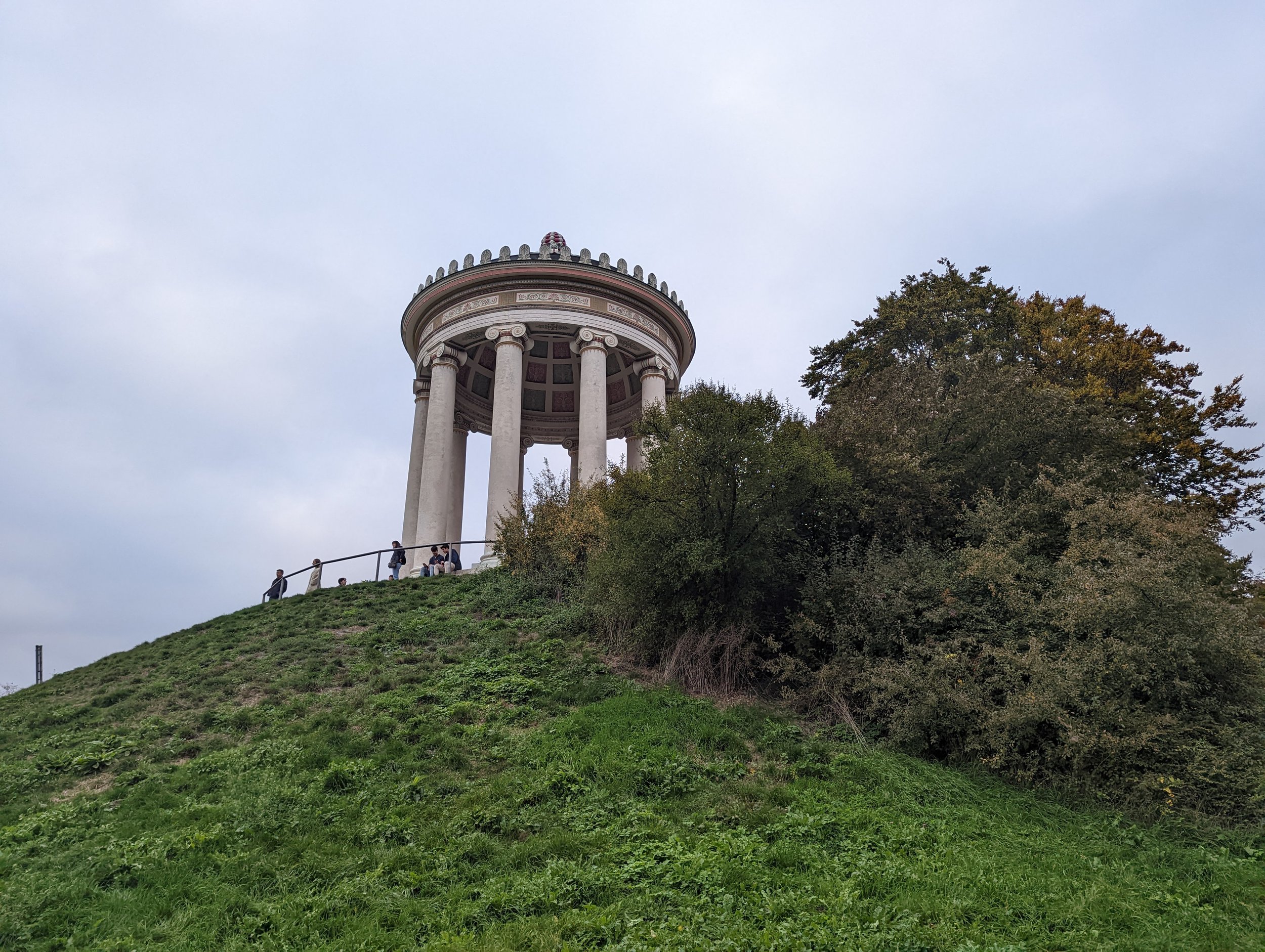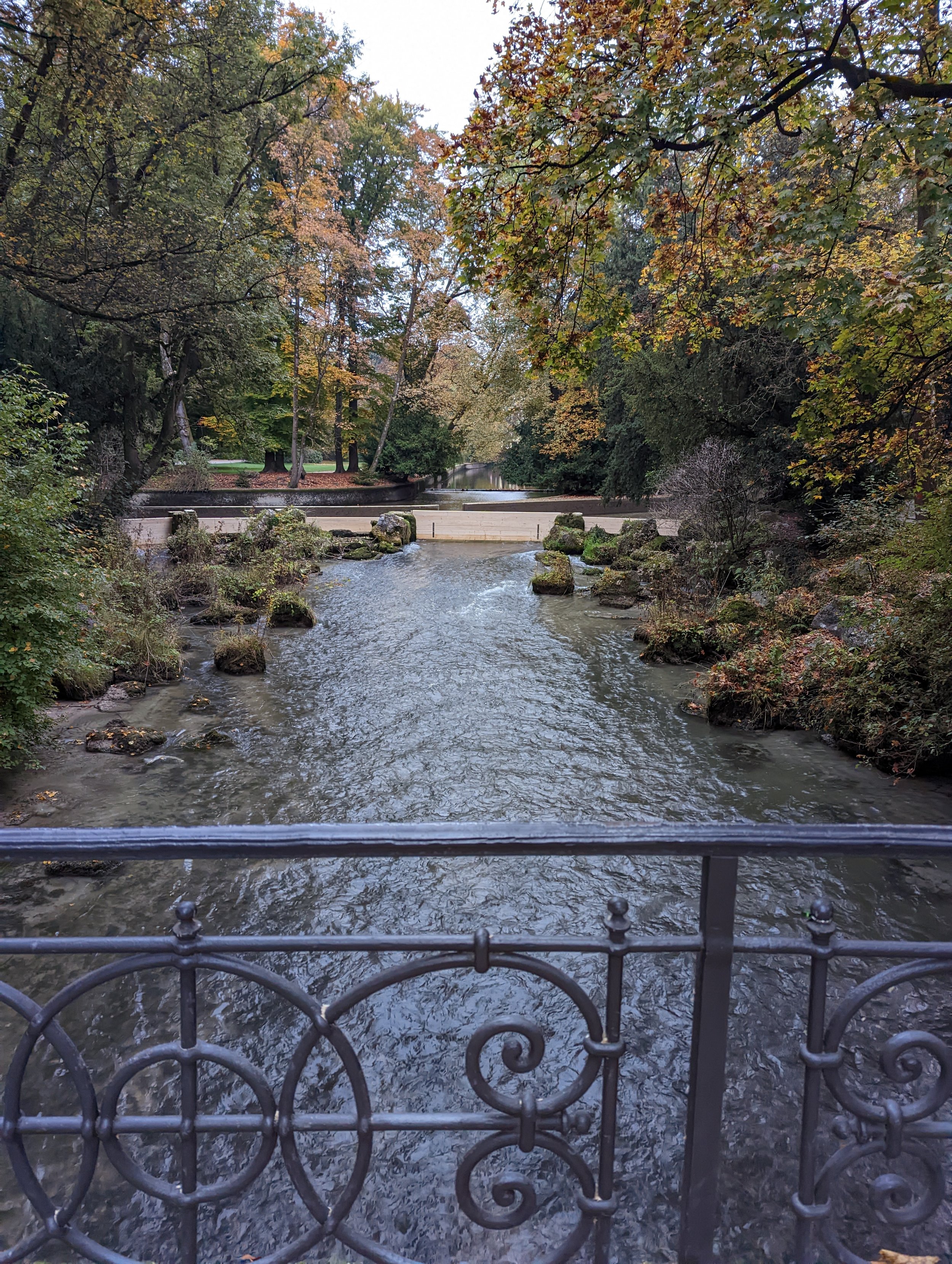History, Humanity, and Helles in Munich, Germany
A view from the Max-Joseph Platz, the square outside Munich’s Residenz (royal palace)
It's hard to believe that in half the time it takes to drive from Pennsylvania to New York City, you can travel to an entirely different country — and culture — within Europe.
But today, that's exactly what we were doing.
Views of the German countryside from the Autobahn
After a musical, momentous day of exploring enchanting Salzburg and the mountain district beyond, I was on my way from Austria to Munich, Germany (or München, as it’s truly called).
Munich is the capital of Germany’s largest state, Bavaria, and is home to the world-renowned Oktoberfest. Even though it was early October, we had actually missed Oktoberfest — which is usually held in late September — by a couple of weeks. Still, I was excited to explore a quieter, less crowded Munich and see all the historic city has to offer.
Traveling by bus via the Autobahn, Germany’s famous high-speed motorway, our group was treated to gorgeous pastoral views of German farms and cloud-cloaked mountains as the countryside rolled by. On either side of the road, clear barriers separated the motorway from the fields. Patterned with painted formations of geese in flight, they allowed us a glimpse of the cows grazing carelessly as we passed.
It almost looked like home, I thought. But not quite.
At a rest stop, several of us gathered on the edge of the parking lot to photograph the gorgeous backdrop of green fields and blue mountains, dotted here and there with little red rooftops. Europe is so beautiful, we joked, that even the gas stations come with a view.
We arrived in Munich by mid-morning, embarking from the bus in the Max-Joseph Platz, a square that houses Munich’s Residenz, or royal palace, and Bayerische Staatsoper, the opera house. As we made our way to the Marienplatz, the central square in Munich’s old town district, I was struck once again by the differences between the architecture here and in the cities we’d already visited.
The buildings, both wide and narrow, were painted in peaches, yellows, pale blues, browns, and creams, fitting together in seamless long rows that stretched down whole streets, their slanted roofs forming an eclectic jumble. Austere churches, cathedrals, and spires reached their pointed tips to the sky. Many buildings, I noticed, were painted with intricate detail-work — an effort, I later learned from our city guide, to preserve the look of the original architecture after so much was destroyed in World War II.
Wandering the Marienplatz, the city center of Munich
We met our local guide in front of the Neues Rathaus (new town hall), an imposing, many-spired Neo-Gothic style building in the Marienplatz. As it turned out, we were just in time for a show.
At 12 pm, we stopped to listen to — and watch — the impressive chime of the Glockenspiel, Europe’s fifth-largest clock, which is intricately adorned with life-sized clockwork figurines that act out two 16th-century Bavarian stories.
From there, we wound our way around the center of Munich, passing cathedrals and outdoor biergartens, weaving through colorful street markets filled with flowers and fresh fruit, and learning about Munich’s complicated history.
We saw the small hole where a bullet from the war is still embedded in the stone side of a building, and we stood before buildings that were leveled by bombs and subsequently rebuilt.
We learned how the opera house had infamously burned down three times. We learned about The Big Six, Munich’s world-famous beer brews, which make their most well-known appearance during Oktoberfest and which, by law, can only contain four ingredients: water, barley, malt, and hops (although yeast is now used, as well).
The Mariensäule column, topped with the golden Patrona Bavariae (the Virgin Mary), who guards Bavaria
Chillingly, we also learned about Munich’s connection to the Third Reich as the founding place of the Nazi party.
As I walked in hushed silence around the Odeonsplatz, a square surrounded by such breathtaking architecture but drenched with such dark history, I thought about the difficult truths we must face to come to terms with the world.
After a merrier evening enjoying gigantic plates of hot food and even bigger beer pints at the Hofbrauhaus, a traditional German tavern, we took the tram back to our hotel, watching unfamiliar city lights flash by.
The next morning, I ventured out of Munich with some of my travel mates to visit Dachau, the memorial site of Germany’s first and longest-operating concentration camp.
As someone with extended family from Jewish communities in Germany and Austria — and as a human being — I felt that it was my responsibility to walk the grounds and pay my respects to the tens of thousands of people who lost their lives there. But also out of respect, I did not take a single photo.
Some things should only be experienced. Some places should only be seen in person.
As our tour guide explained the brutal, unthinkable realities that so many people endured, right where we stood, I struggled to wrap my head around it all — to understand how human beings could be responsible for such horrific actions, so recently. But it felt more real, standing there in Dachau, than it ever had before — and more relevant to the world today, where so much hardship and hatred contends with all the beautiful things.
It was harrowing, haunting, and deeply humbling. I’ll never forget it.
Another signature flower photo — Europe really makes room for green patches and plant life throughout its urban spaces.
When we returned to the city, I wanted to immerse myself in more history — so, along with a few of my travel mates, I spent the afternoon exploring The Residenz, Munich’s royal palace.
As the home of Bavarian kings, dukes, and prince-electors — most notably, the royal Wittelsbach dynasty — from the 16th to the 20th centuries, the Residenz is a sprawling, stately building that transports you back in time.
As we wandered the Museum, which only makes up a portion of the palace’s courtyards, conservatories, collections, and other offerings, we were treated to grand facades, ornate art and furniture arrangements, and architectural features from the Renaissance to the Neoclassical periods.
Each tapestry-laden, gold-detailed room offered a glimpse into history — from sweeping paintings and full-ceiling frescoes to intricately arranged royal chambers, complete with authentic furnishings and devotional items from different ages. In other rooms, we found delicate china collections and displays of artwork gathered from around the world.
Outside and inside the Munich Residenz, the royal palace of the former Wittelsbach monarchs of Bavaria.
In the royal portraits, grand halls, and displays of artifacts from the Mediterranean to Asia, I found another side to Germany’s history — the culture and beauty that preceded all the darkness, and the efforts put into rebuilding those aspects afterwards.
From the Residenz, we meandered further into the heart of Munich — through the royal Hofgarten that backends the palace and onwards into the Englischer Garten (English Garden), a vast stretch of green measuring up to almost 1000 acres.
Larger than Central Park in NYC, the English Garden is full of monuments, attractions, and paths that wind between trees, over bridges, and across large fields. As we entered from one grassy corner and made our way past the Japanese Teahouse (which was, unfortunately, closed for construction), I got a sense of just how vast this park really is, and how much life it encompasses.
As we crossed over a shady bridge onto a grassy footpath, I could see dogs following their owners at a distance, leashless but behaved, children chasing flocks of geese, and after-work crowds lounging on picnic blankets with beers. Bikers cycled past leisurely, and small groups of teenagers kicked soccer balls back and forth.
It had been over an hour, I realized, glancing down at my city map — and we’d barely breached the corner of this massive green space. If I’d known how much it had to offer, I would have come earlier, but it was already beginning to get dark.
A walk from the Hofgarten (behind the Residenz palace) to the English Garden, one of the largest city parks in the world
That’s the thing about wanting to see so much — you end up, always, with what feels like too little time.
As dusk began to settle, we made the reluctant decision to turn back towards the city, where a few pints of pale Helles lager and a warm meal waited for us at one of the city’s Augustiner bierhäuser. But first, we climbed the green hill to the round, temple-like Monopteros building, where all of Munich was laid out beneath us in the last of daylight.
Looking down over it all, I thought about how different life is everywhere, and how we each take our own for granted.
From the top of the hill, I was savoring my last few moments in this part of the world — while for so many of the lives moving around me, it was just another evening in the park.
From both perspectives, it was a beautiful view.
See you again soon, München!




